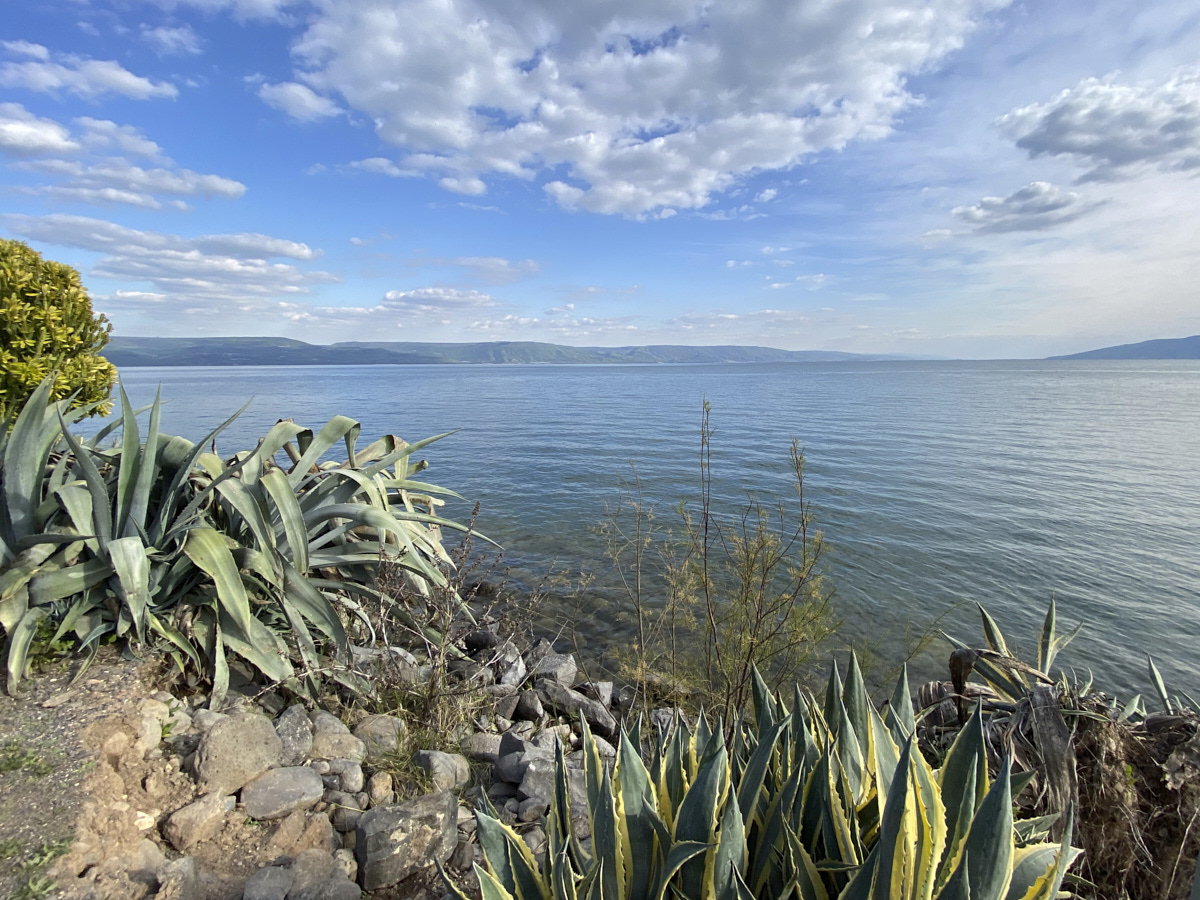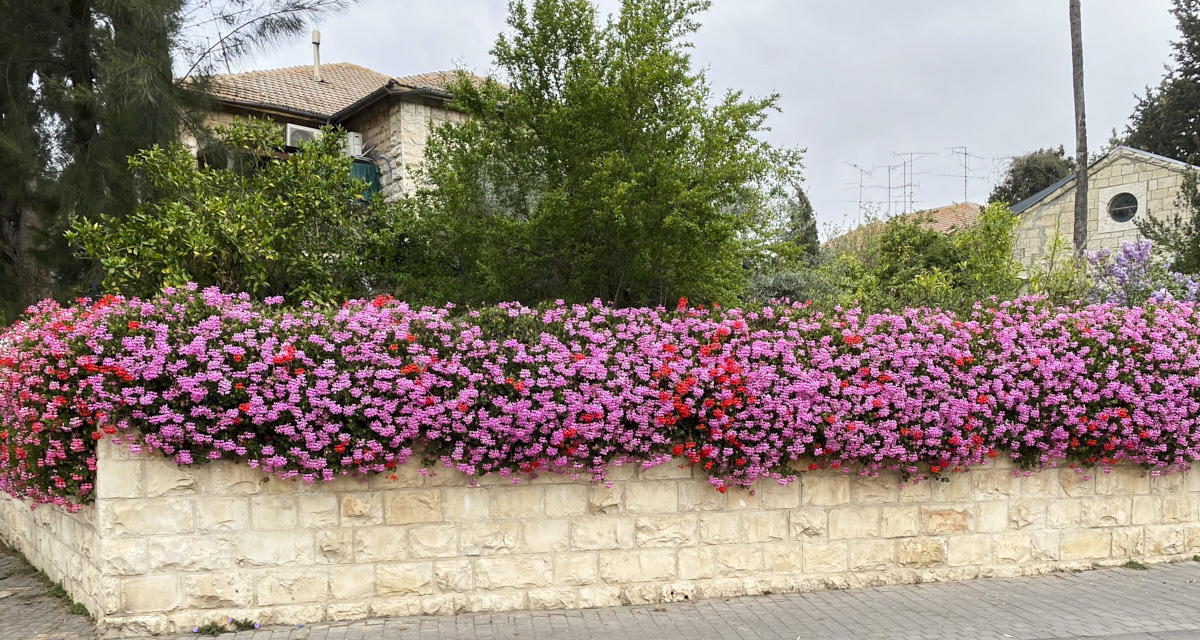In our fourth, and final, post on Israel we have a variety of photos that we haven’t shown yet. They are almost all from around Jerusalem, showing our day to day lives and exploring. We have used Wikipedia in some situations to explain certain locations or structures and their importance in history. The Wikipedia text is in quotes and a link is provided where needed. We hope you will enjoy.
The pictures below are from the Church of the Holy Sepulcher.
“The Church of the Holy Sepulcher is a church in the Christian Quarter of the Old City of Jerusalem. According to traditions dating back to the 4th century, it contains the two holiest sites in Christianity: the site where Jesus was crucified, at a place known as Calvary or Golgotha, and Jesus’s empty tomb, where he is believed by Christians to have been buried and resurrected,” according to Wikipedia.
The building has a massive exterior, with a much smaller Interior chapel Church underneath the church’s main dome.
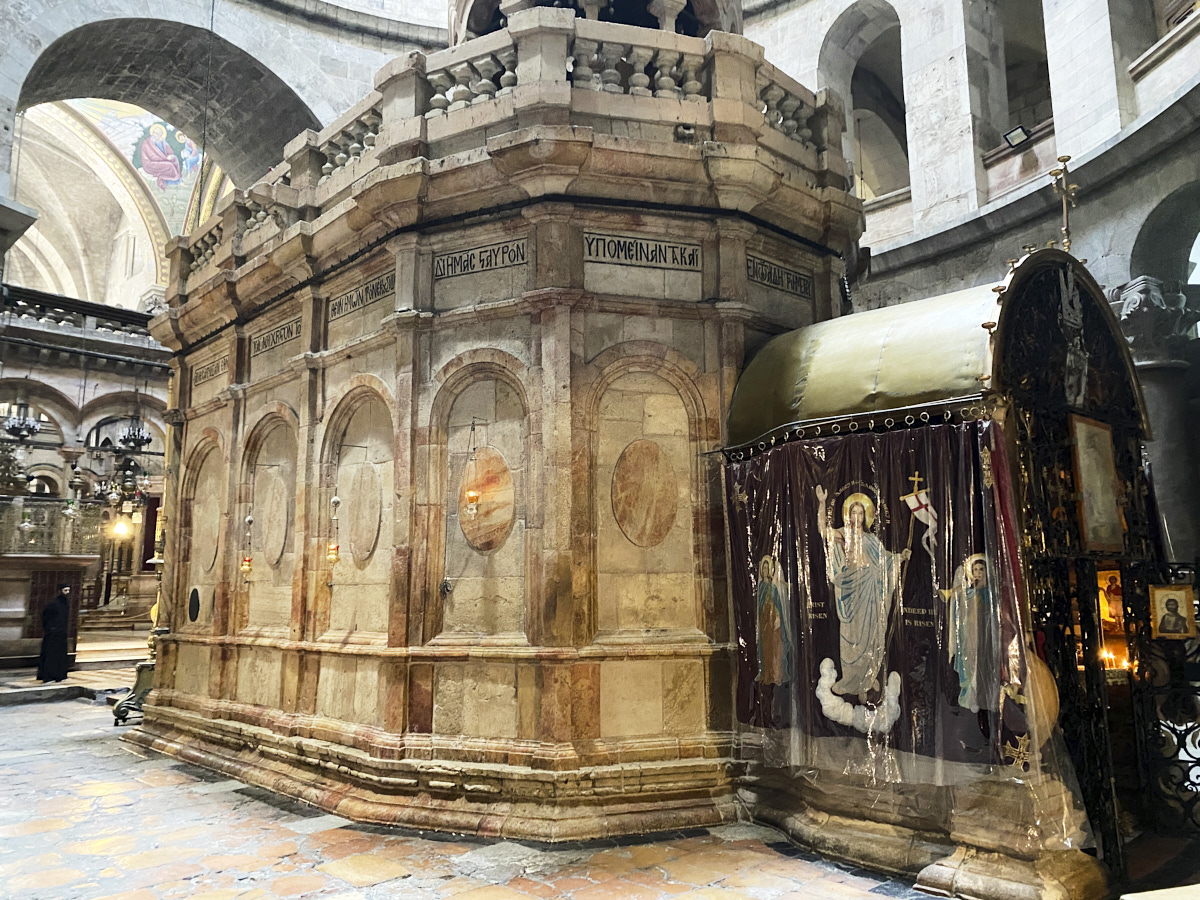
And a lower level, including a mosaic floor.
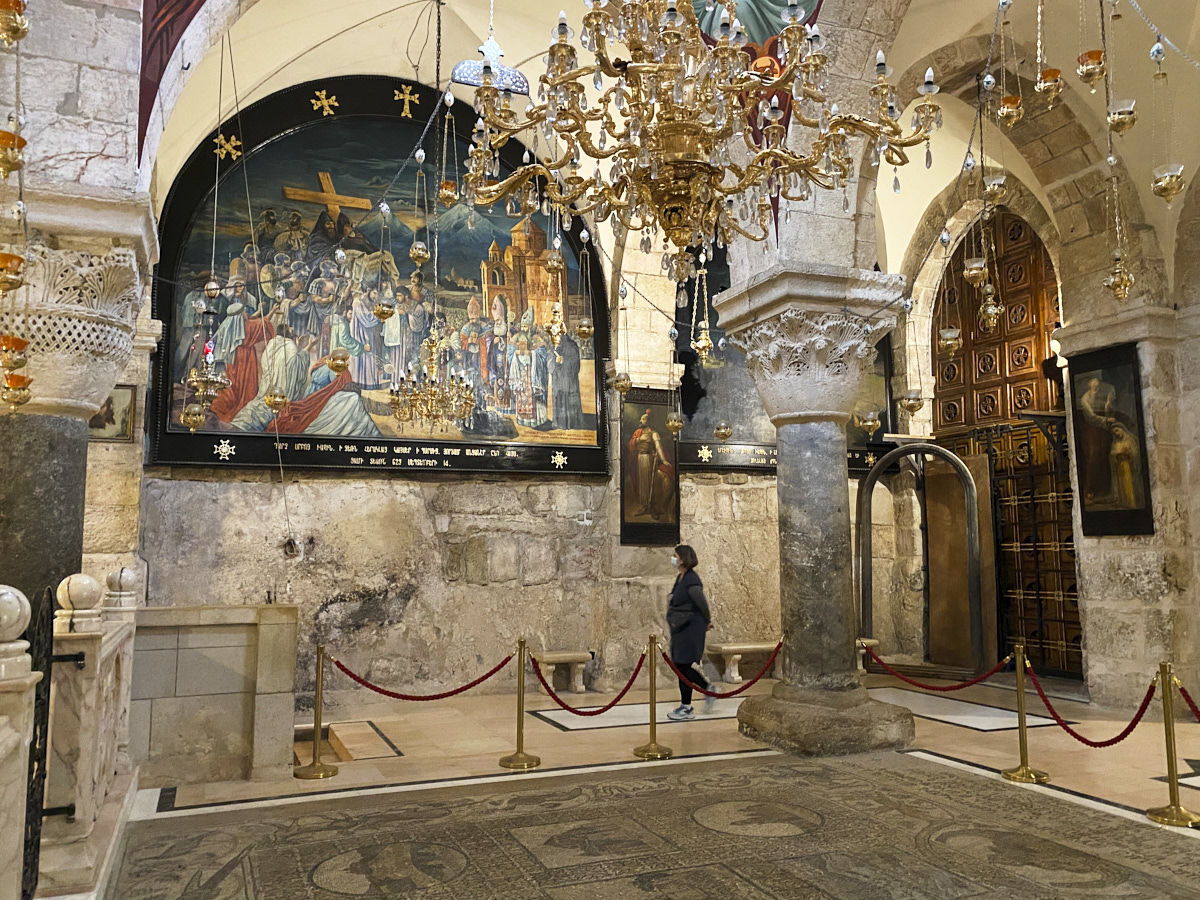
Ceiling Church of the Holy Sepulcher
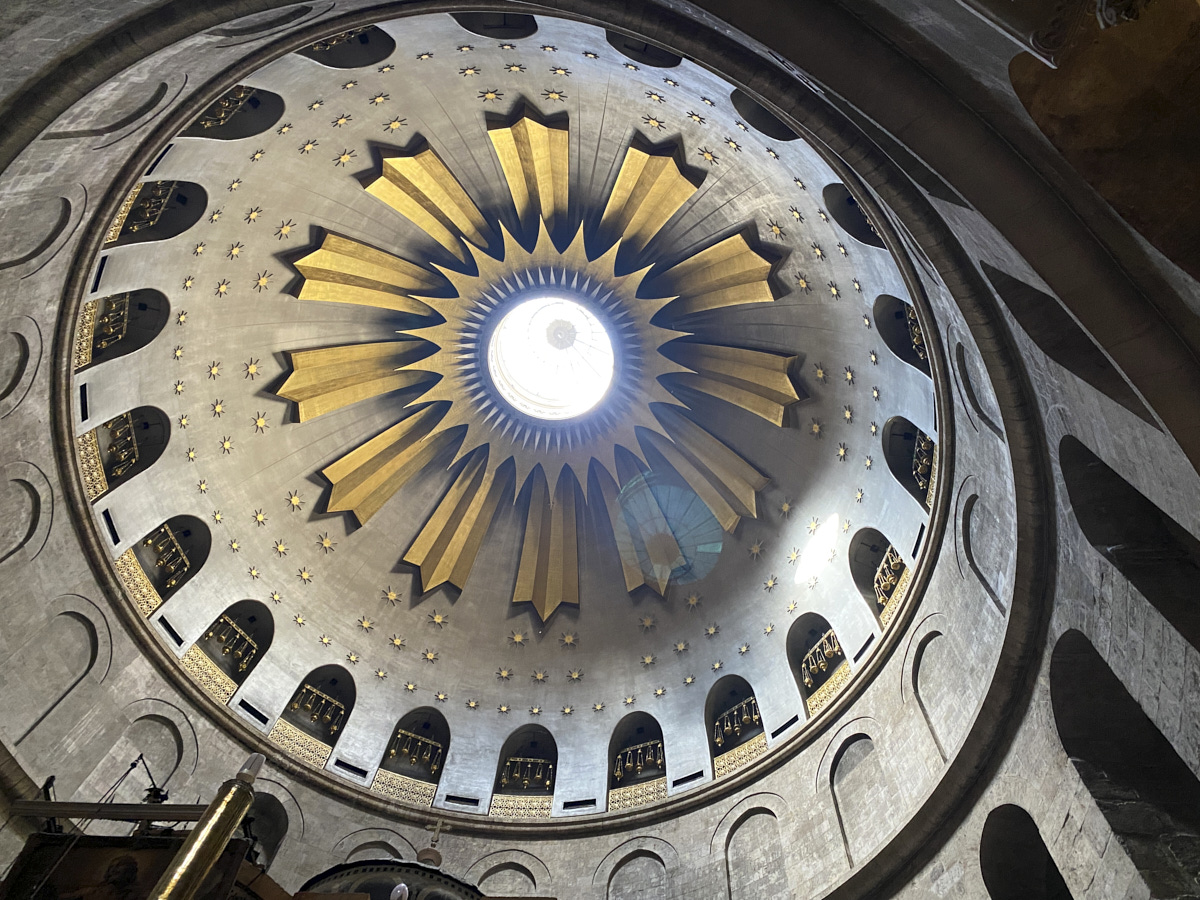
Monastery of the Cross, located to the southwest of the Old City.
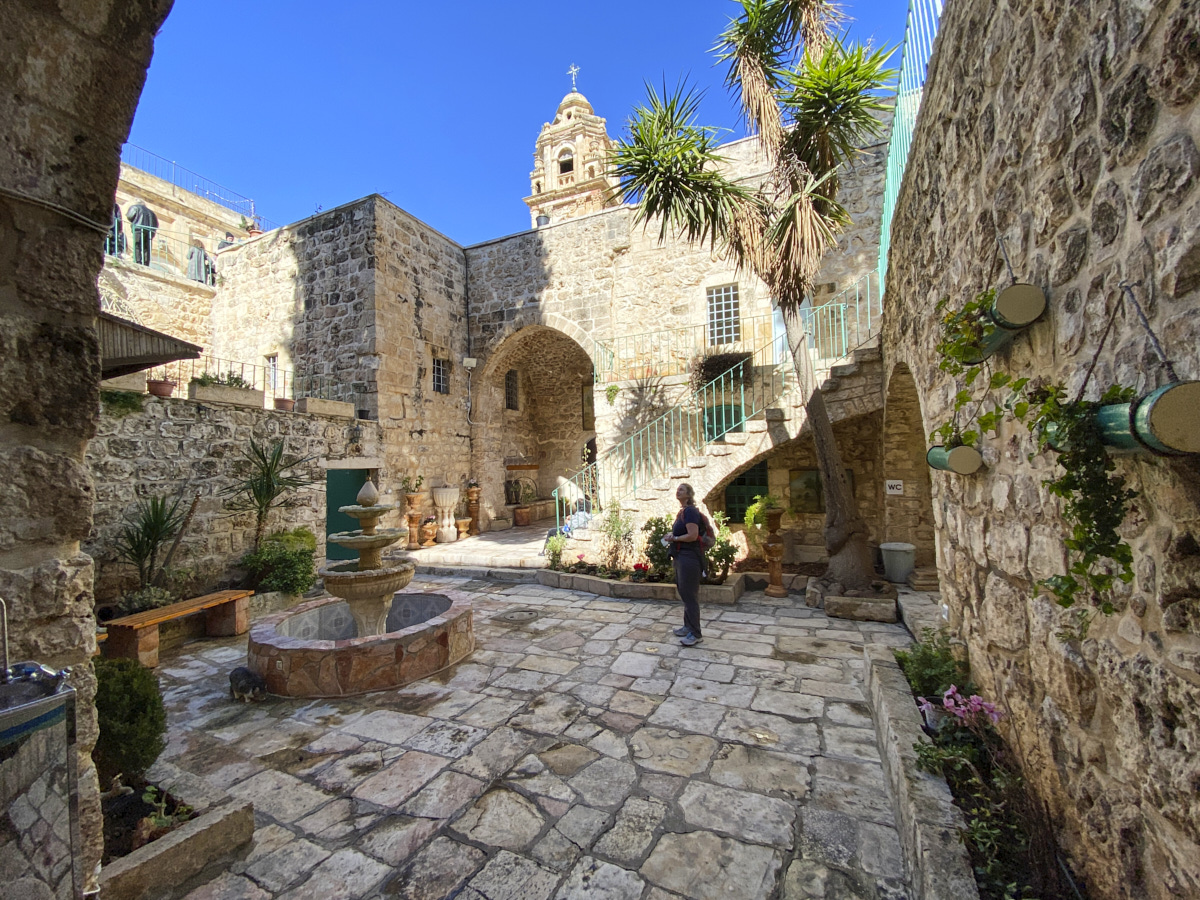
Buildings and landscape. Almost every building has a limestone facade, giving the city a very consistent appearance.
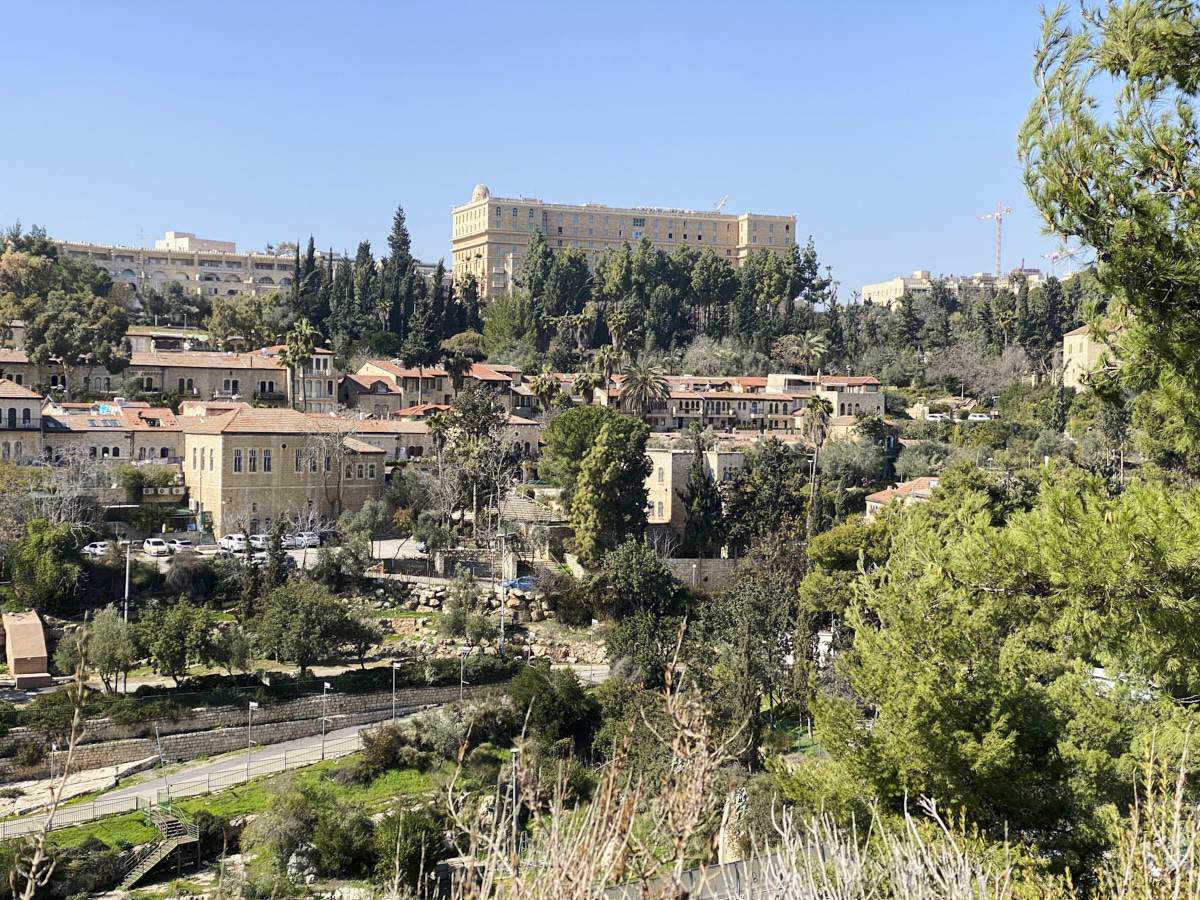
Cemeteries east side of Old City
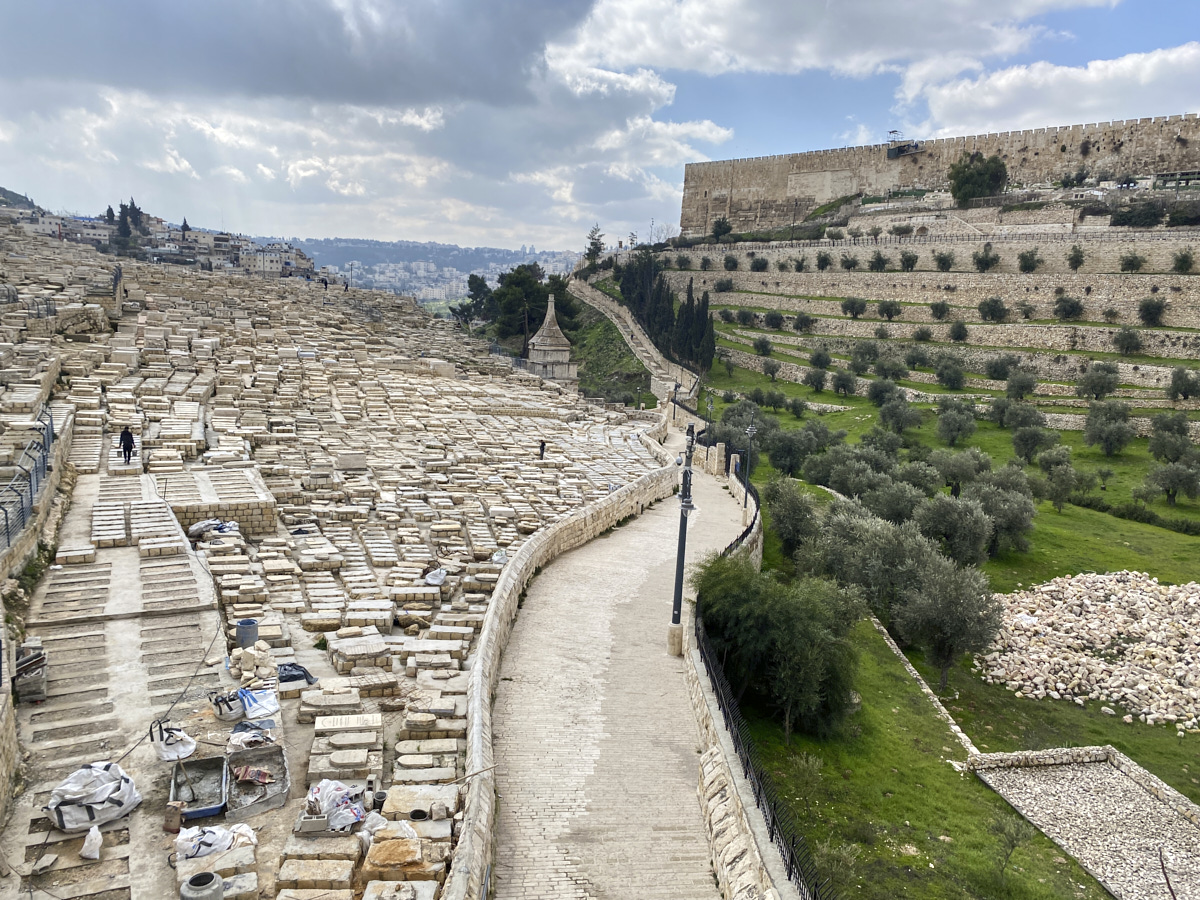
Outside the view back towards the city wall. The city of David is believed to have been located to the south of the old city.
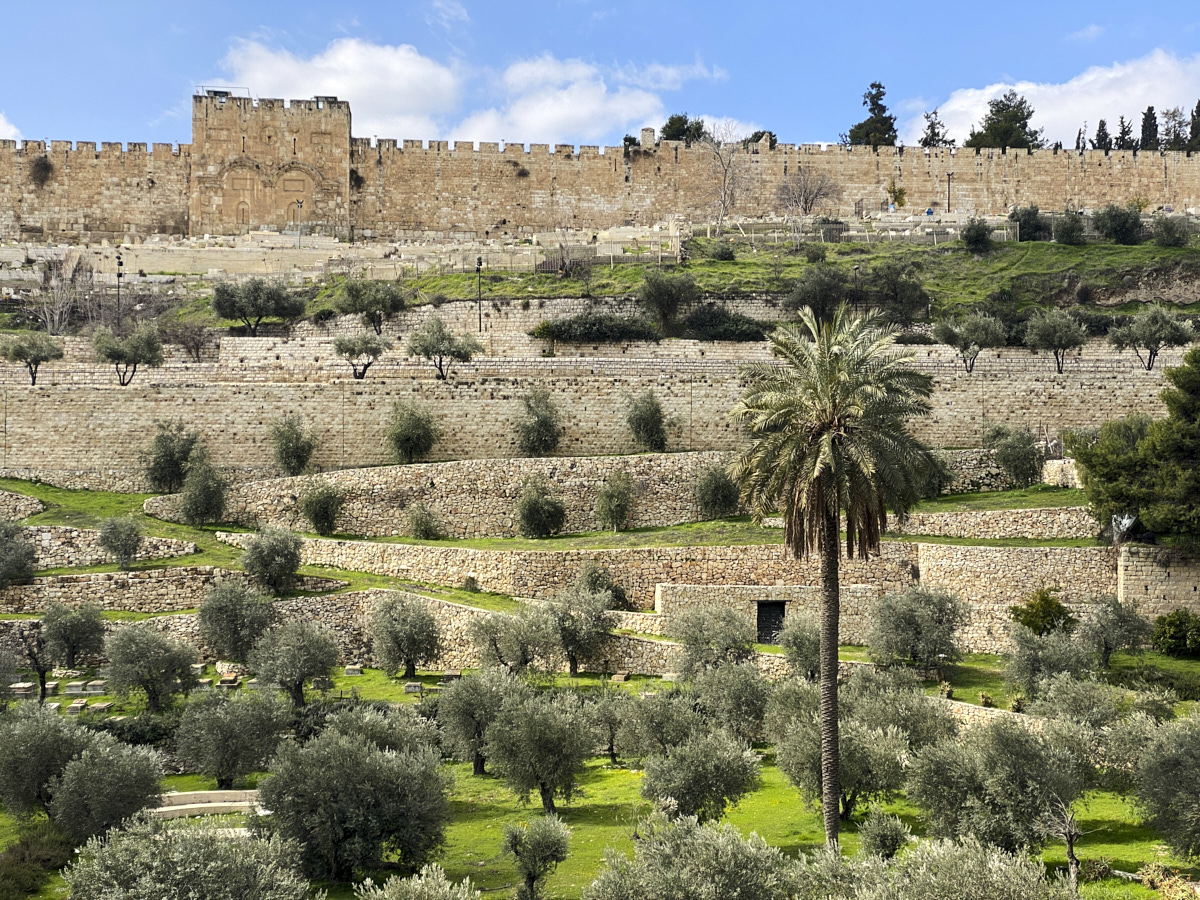
“The City of David is the name given to an archaeological site considered by most scholars to be the original settlement core of Jerusalem. During its long history, Jerusalem has been attacked 52 times, captured and recaptured 44 times, besieged 23 times, and destroyed twice. The oldest part of the city was settled in the 4th millennium BCE, making Jerusalem one of the oldest cities in the world.” Wikipedia
Looking over Jerusalem, from the Tayelet Haas promenade. The walls of the old city are in middle right, with the gold dome of the Dome of the Rock mosque visible. Our apartment was towards the left side of the photo. This promenade had a nice park, so was a common walk for us. Followed by more views of the promenade.
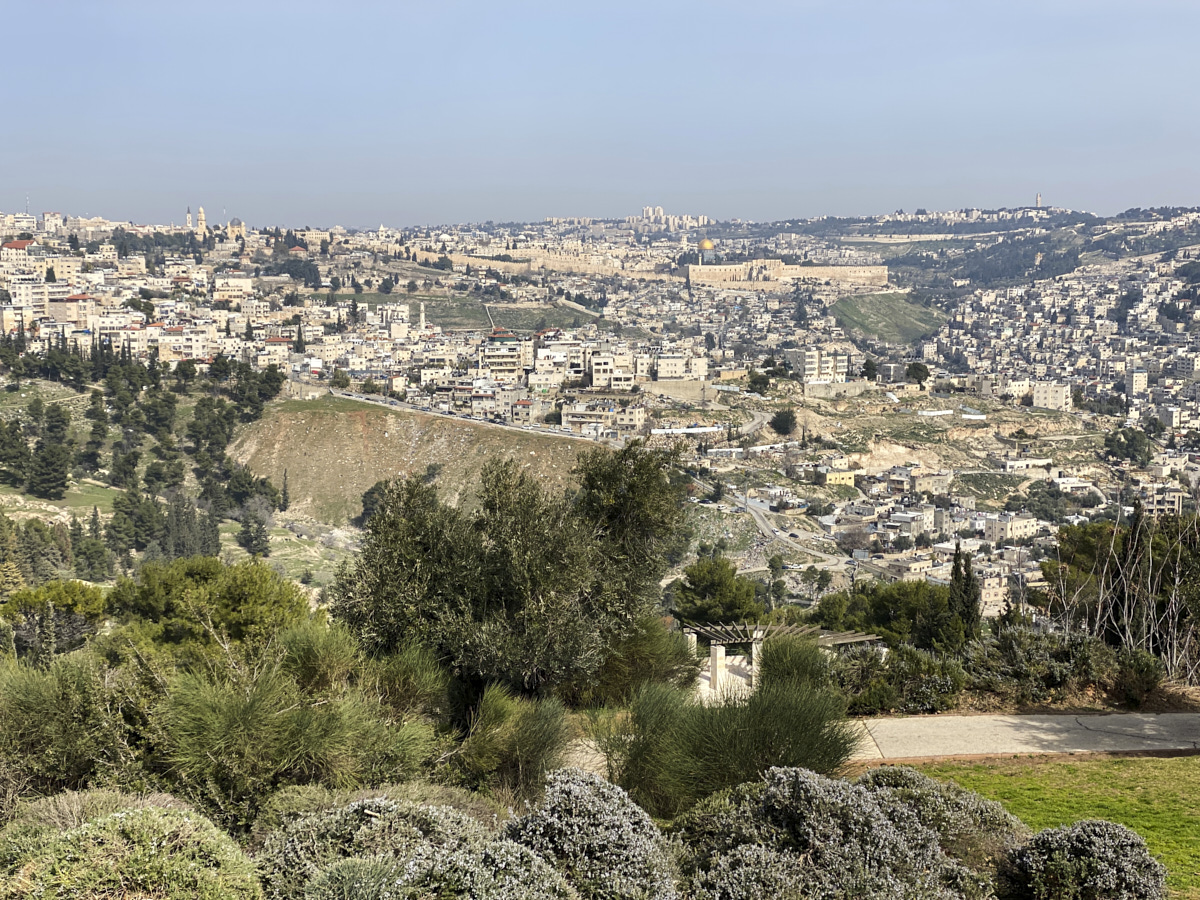
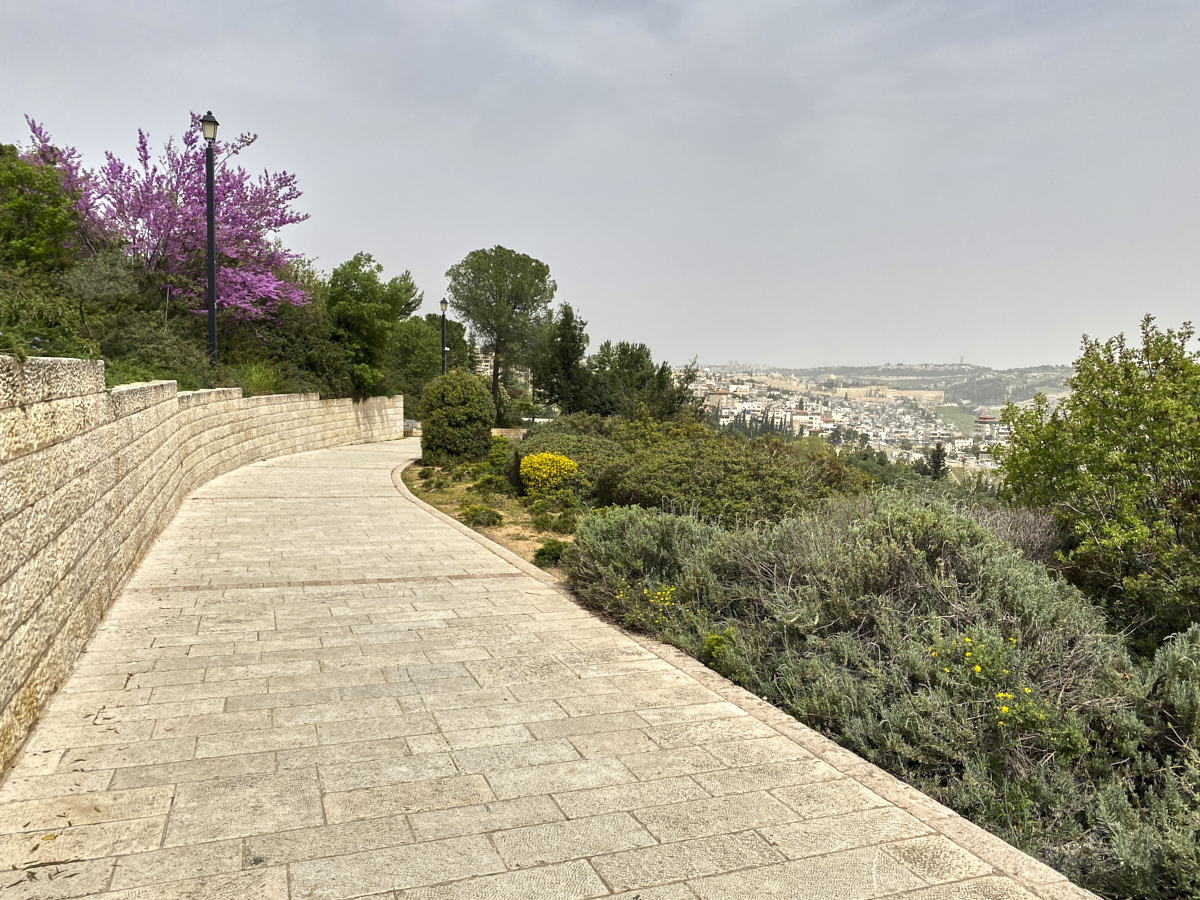
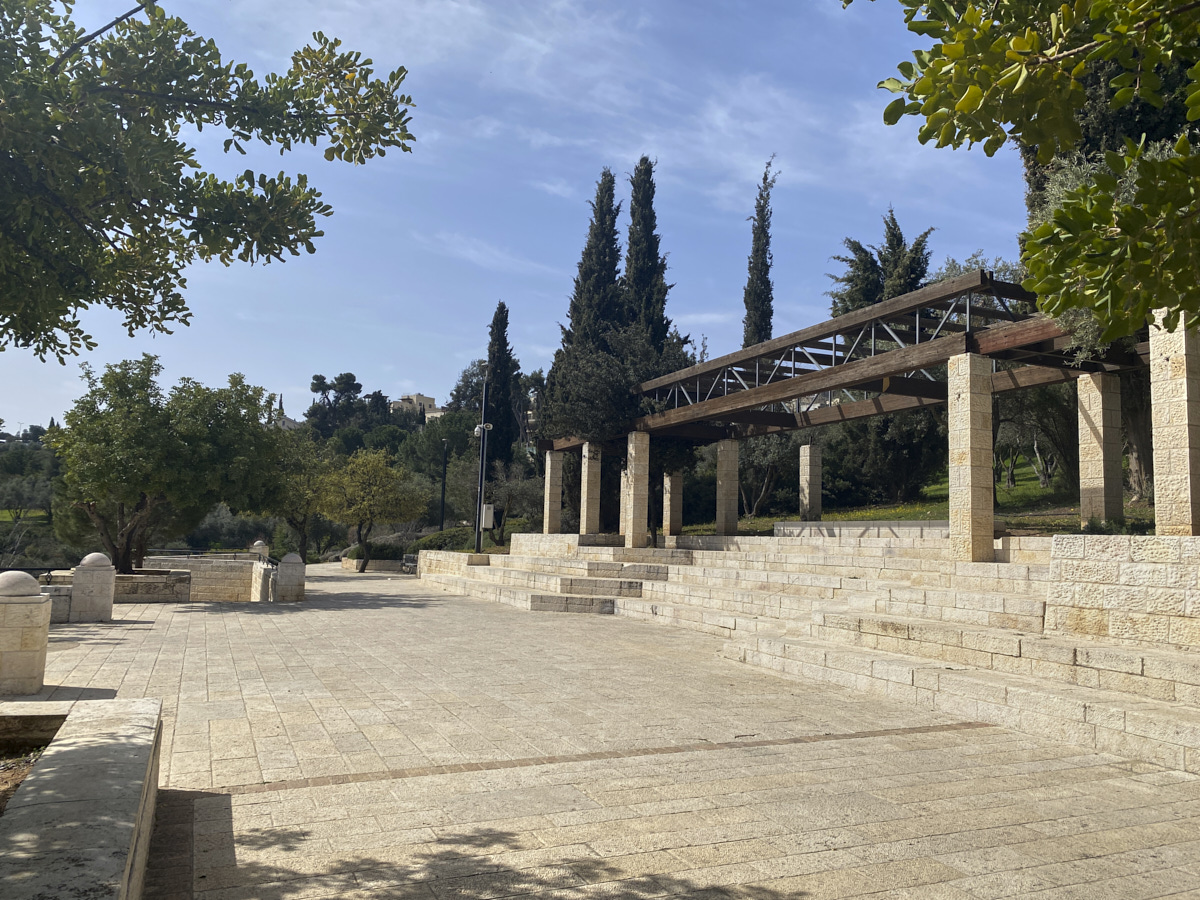
Poppies growing in the fields near the Tayelet Haas promenade. 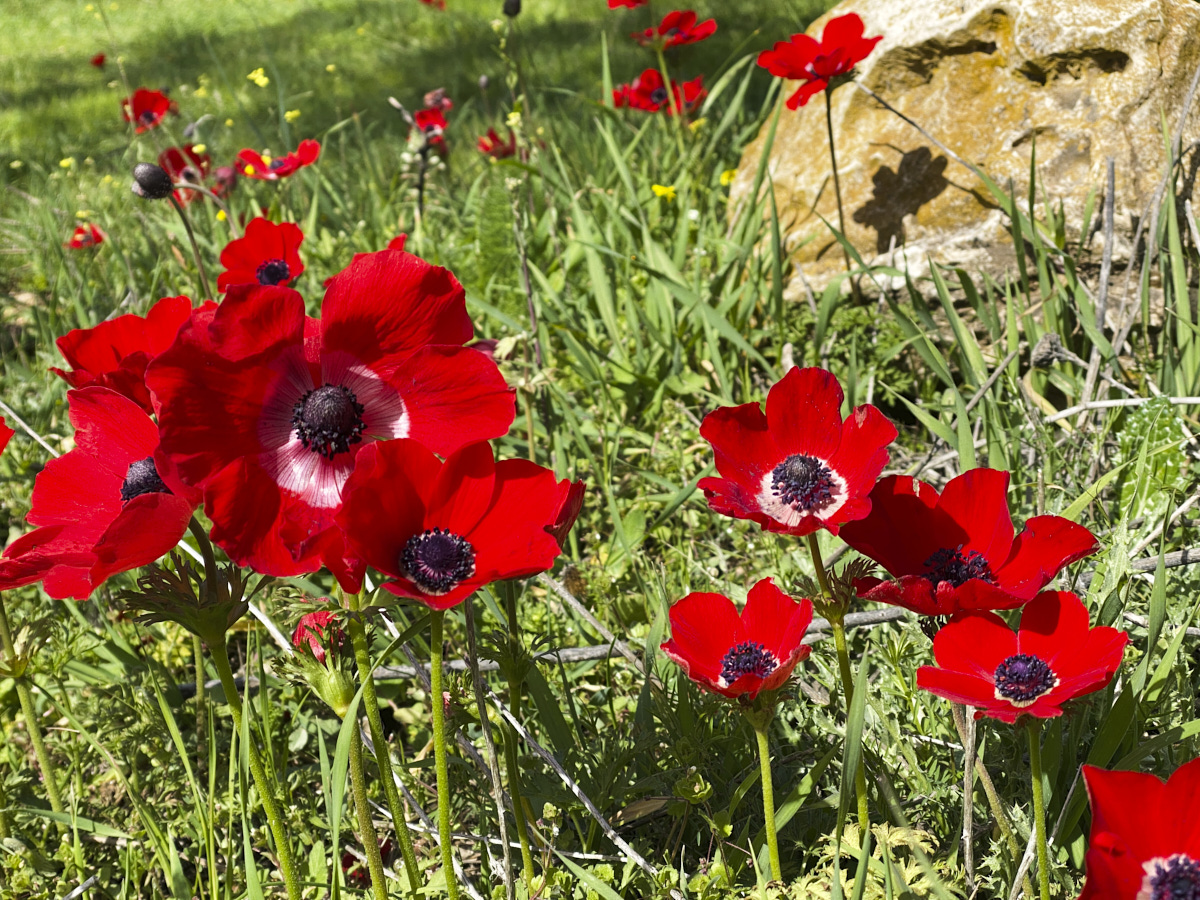
One variety of coniferous tree produced these small seeds, about the size of a quarter. It was important to keep an eye on the path, as stepping on one of these was like stepping on a marble!
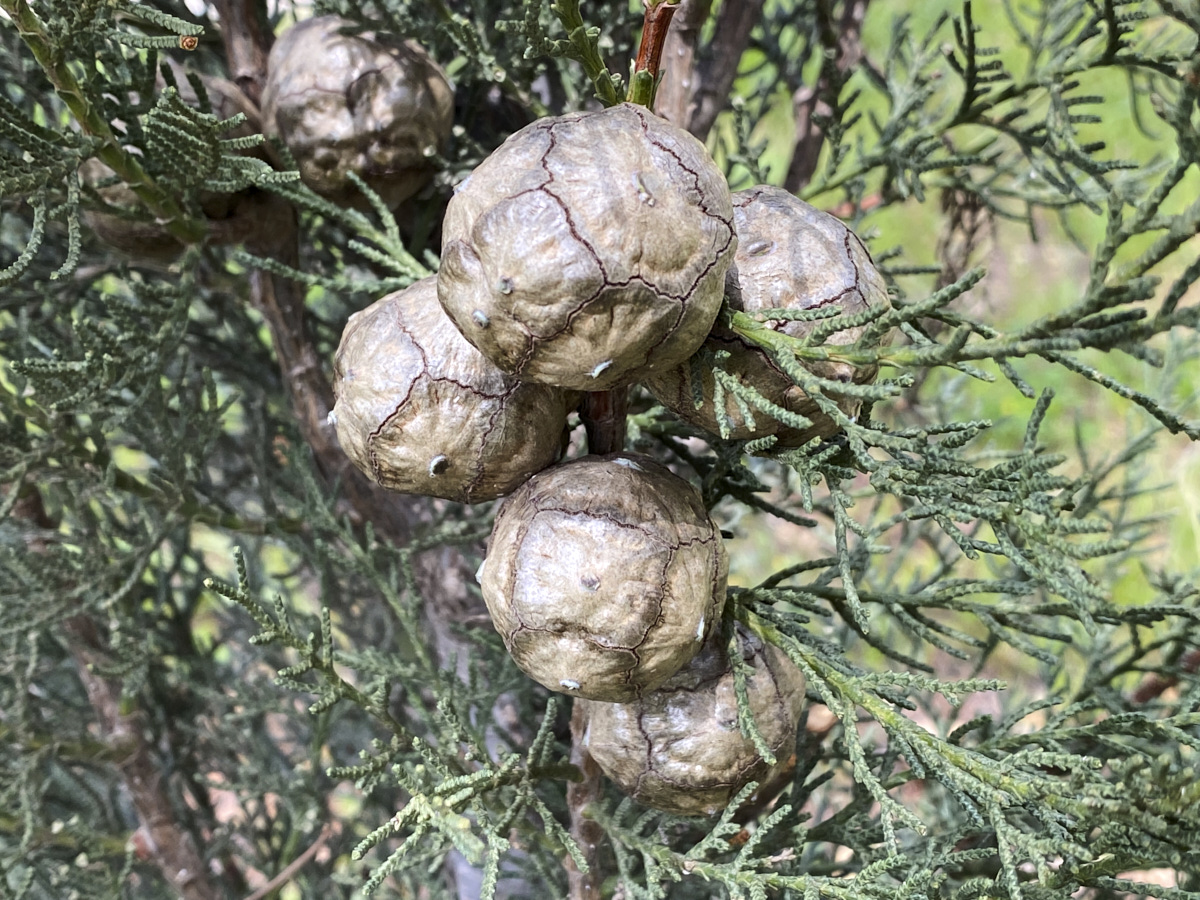 We saw rosemary everywhere, which smells wonderful, and also makes it easy to harvest a little for our cooking.
We saw rosemary everywhere, which smells wonderful, and also makes it easy to harvest a little for our cooking.
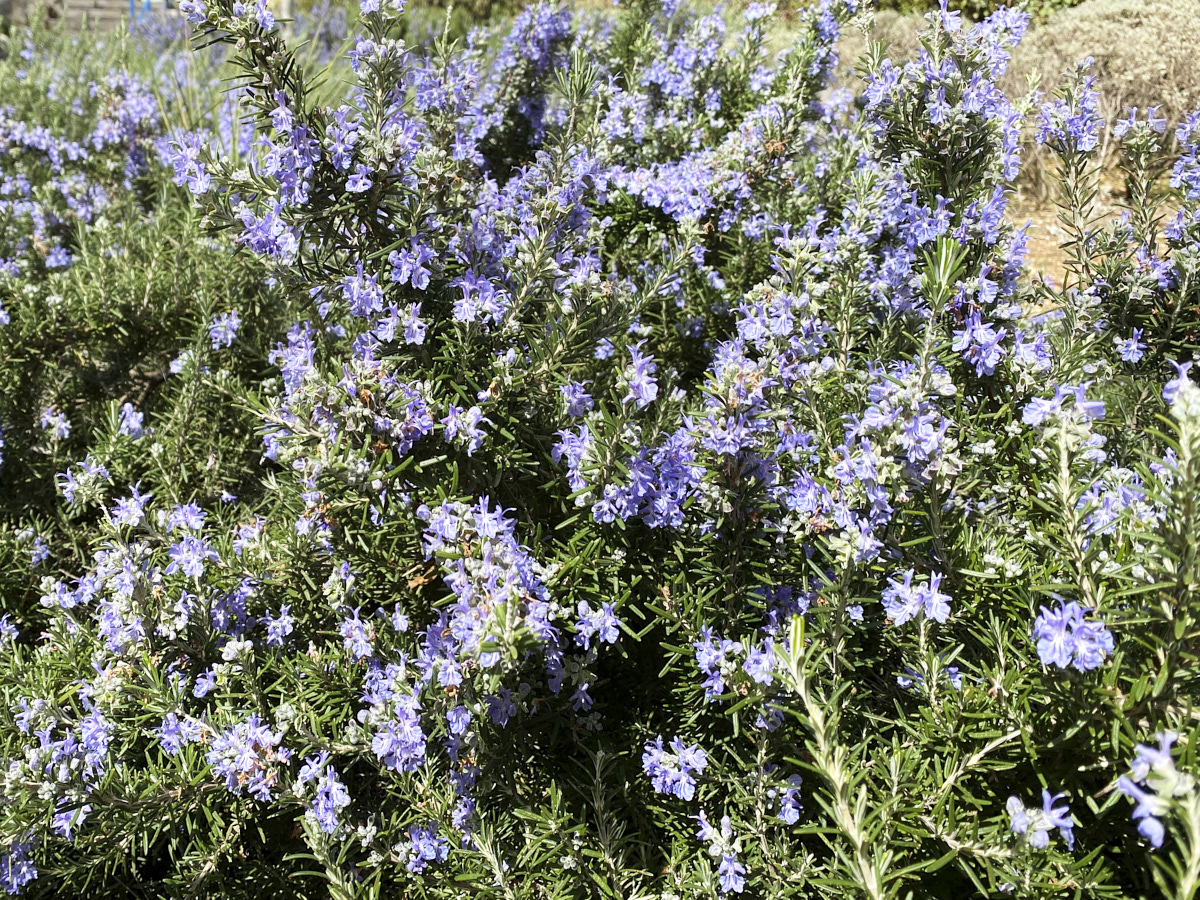
Pools of Bethesda
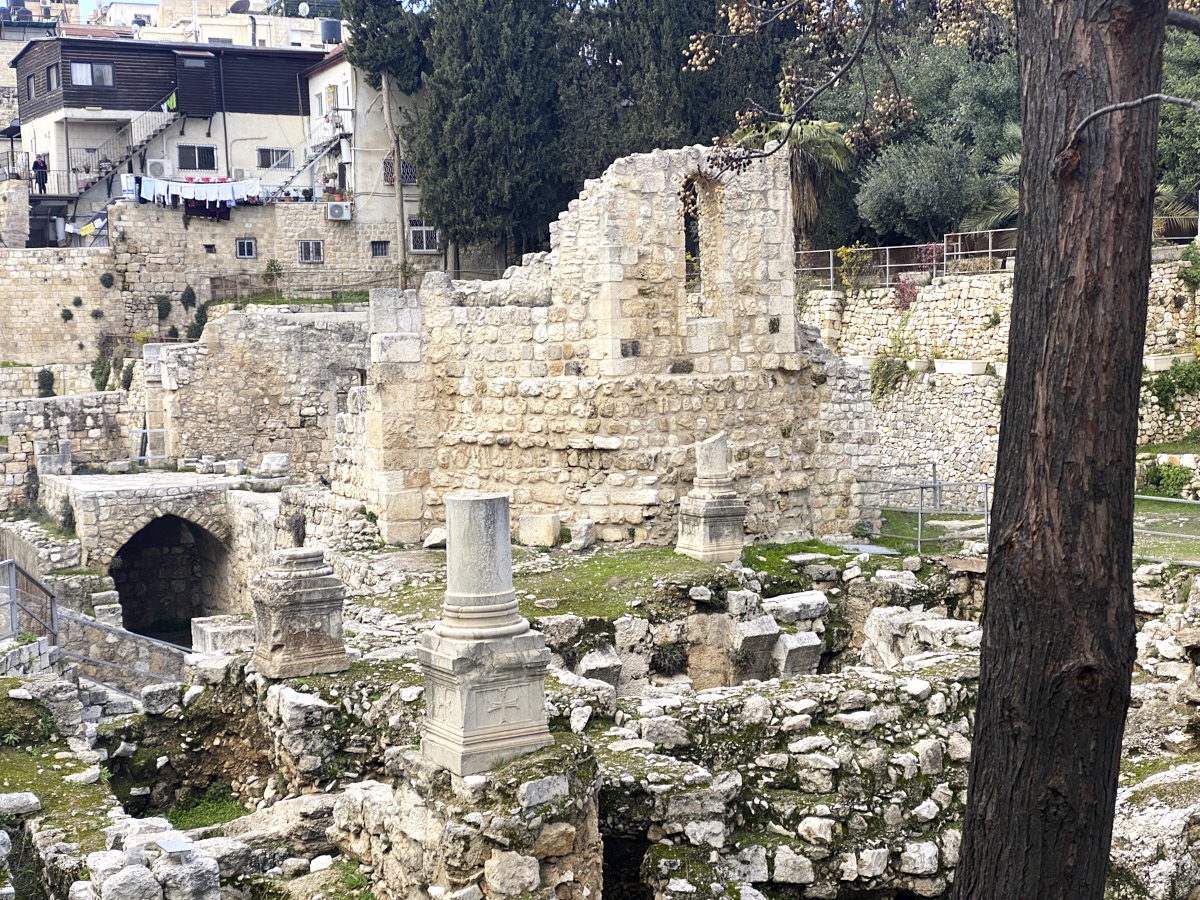
“The Pool of Bethesda is a pool in Jerusalem known from the New Testament account of Jesus miraculously healing a paralyzed man, from the fifth chapter of the Gospel of John, where it is described as being near the Sheep Gate, surrounded by five covered colonnades or porticoes.”
Pools of Bethesda Jerusalem
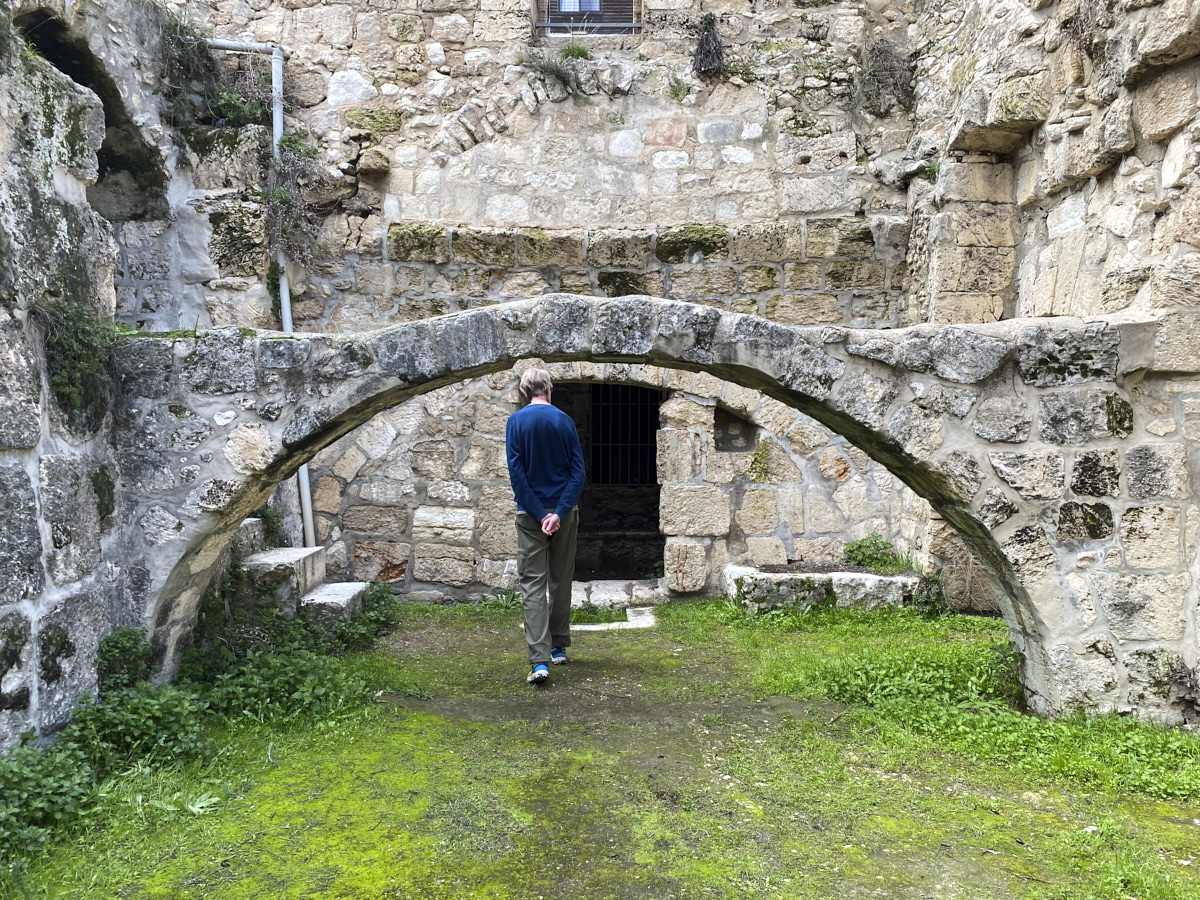
And experiencing a city is never complete without visits to the various yarn shops.
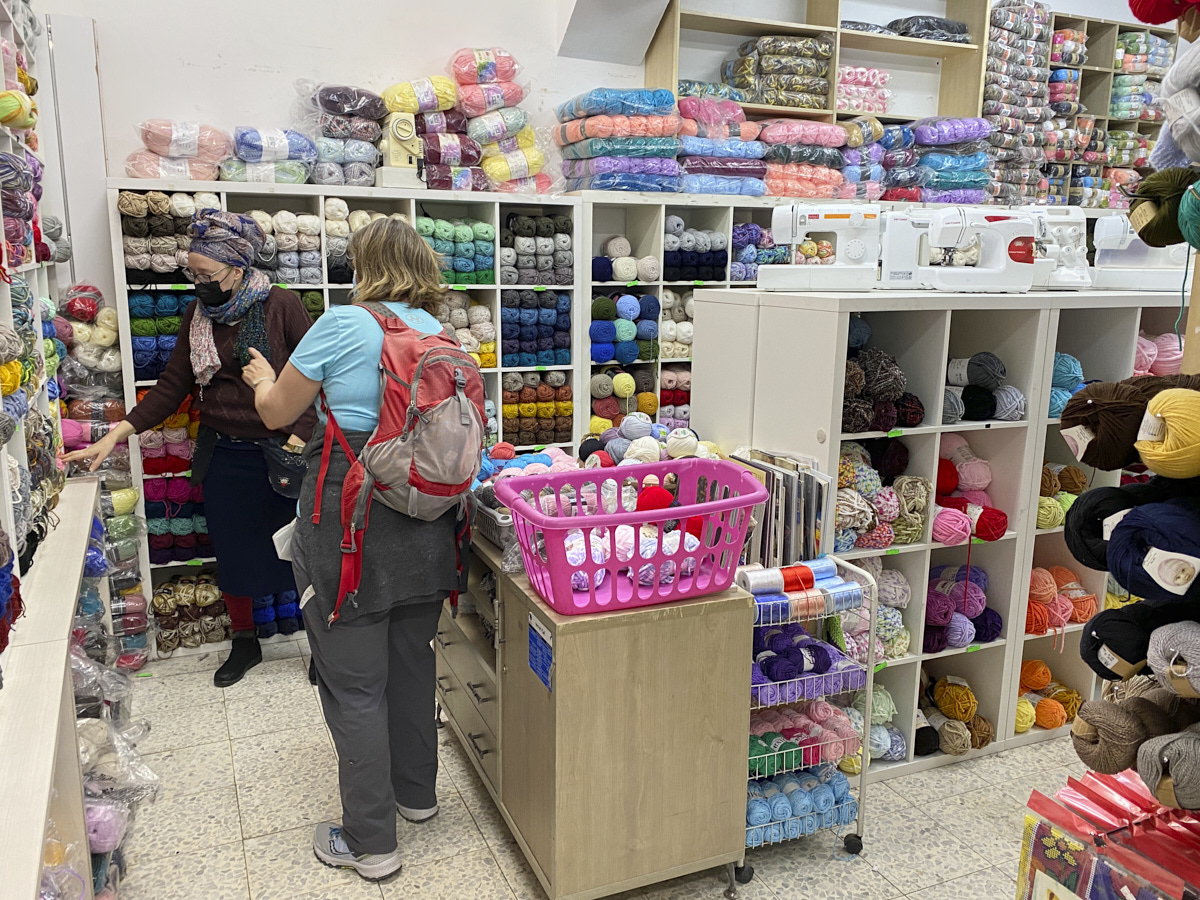
Dormition Abbey just south of the wall of the Old City, Jerusalem
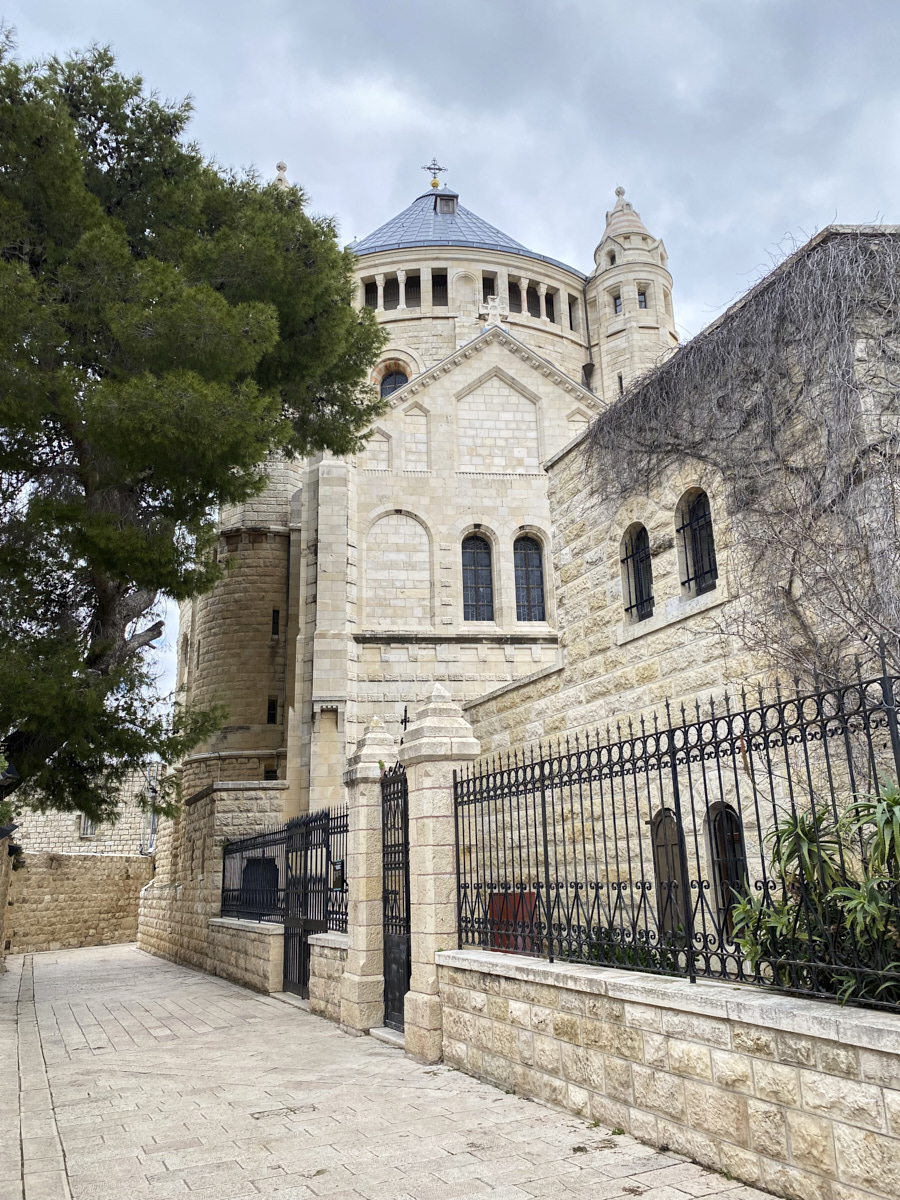
Tower in Jerusalem, on the North side of the plaza of the Dome of the Rock.
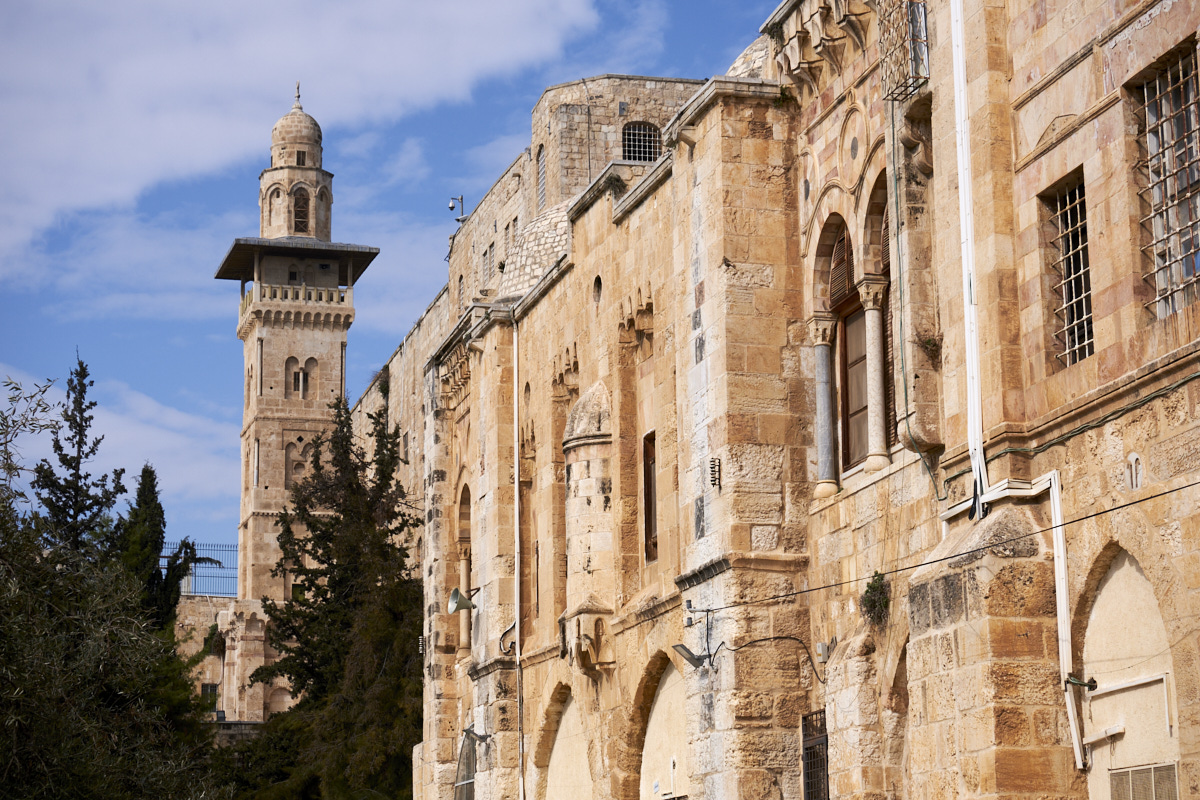
For exercise we often find walking paths, preferably with few traffic lights, so we can listen to podcasts or music and not have to think where we are going. I love Osmond maps for this purpose as it can track me as I walk and I can find my way home again. So far I can name Jerusalem and Surprise, Arizona to have the most similar houses and/or building code, therefore the easiest to get lost in. Smile. First Station retail complex was near where we stayed in Jerusalem and and on one of several walking paths we found. This former railway line is now a foot path meandering through some parks. The following photos are of sights on our walks.
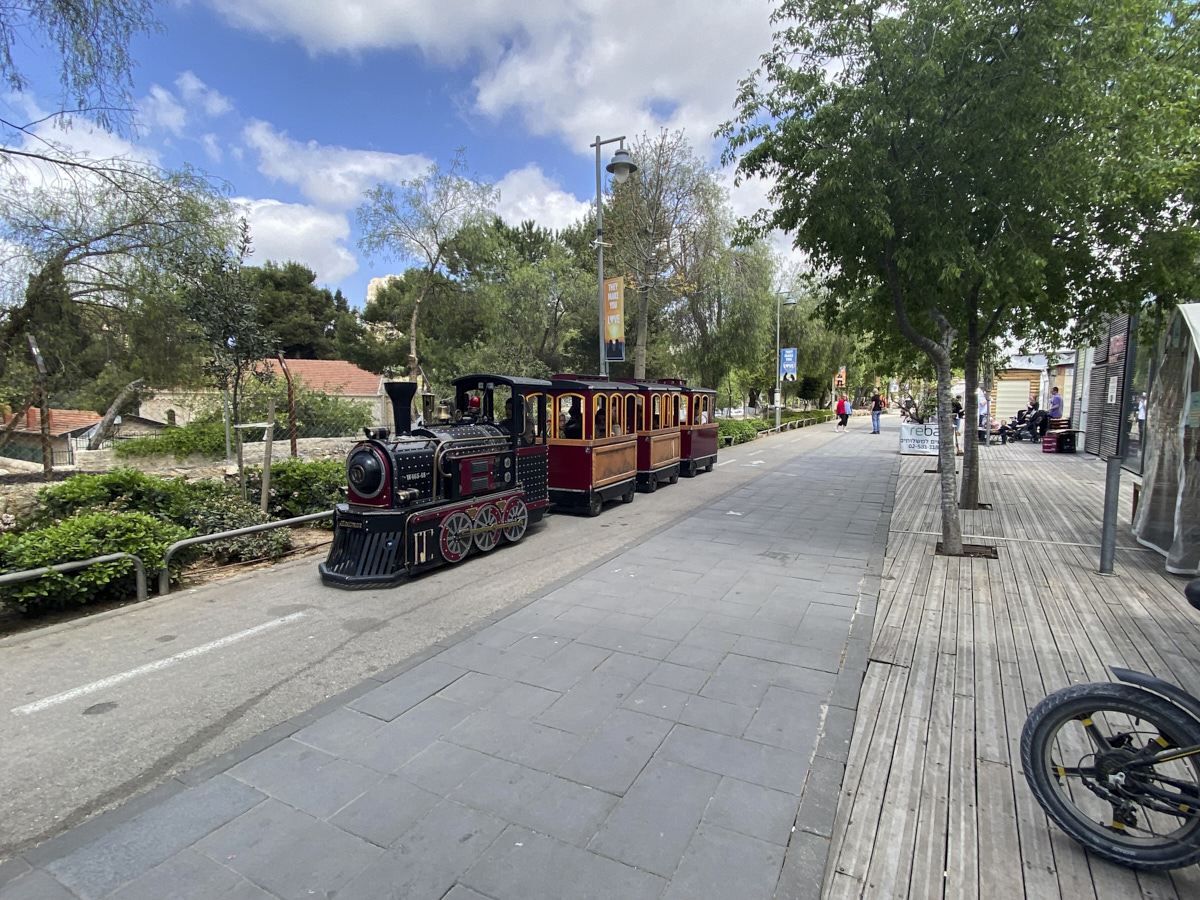
Street art outside Jim Brown building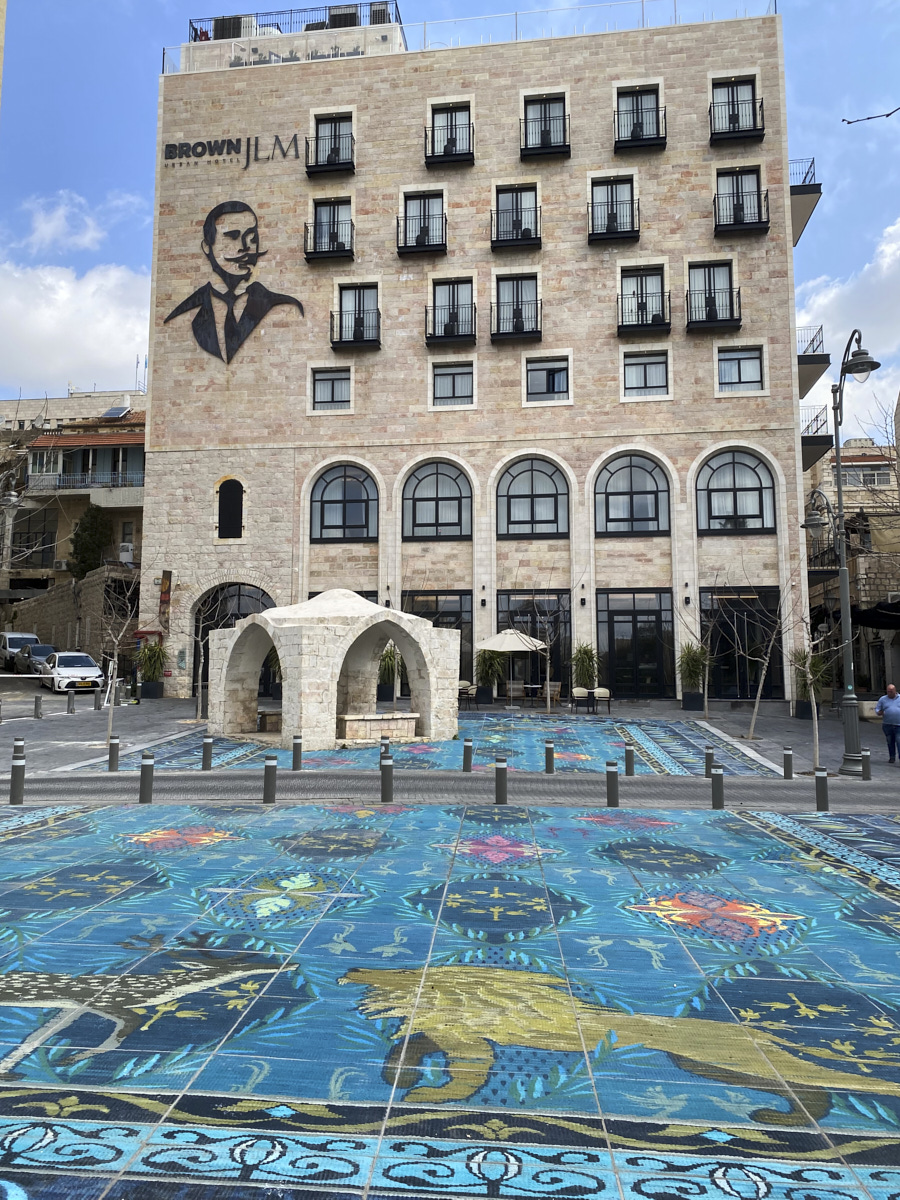
Deb and Cherry Blossoms Jerusalem
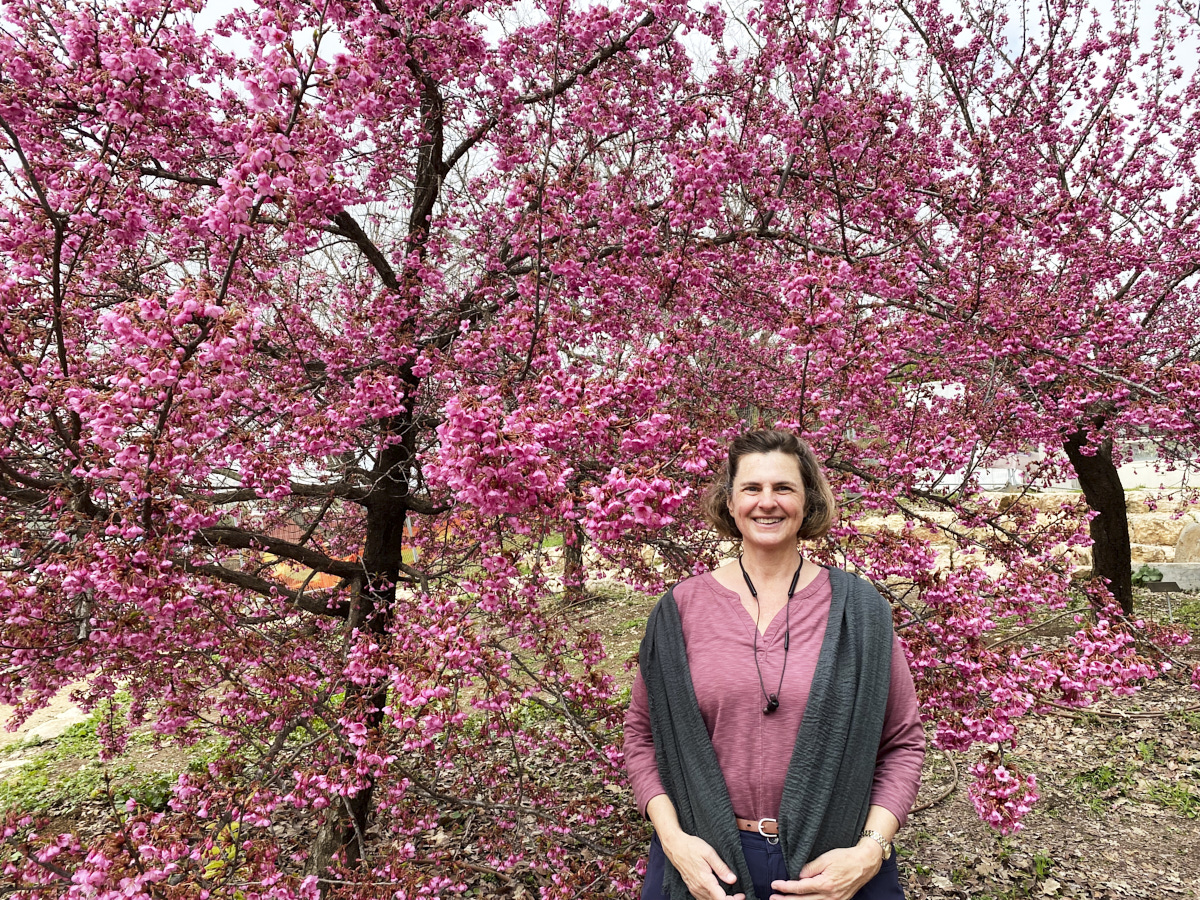
View through buildings on our walk of Jerusalem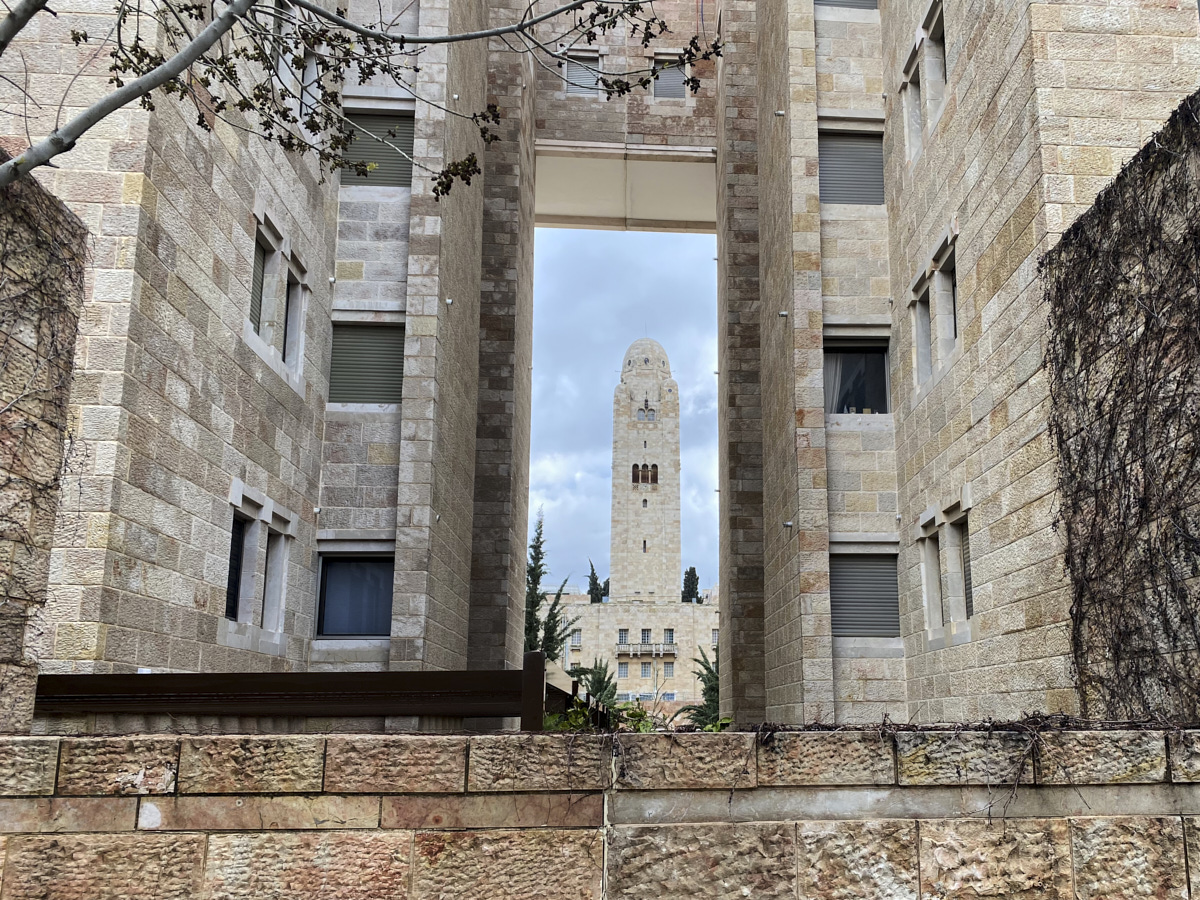
Graffiti under a bridge in Jerusalem, along the First Station trail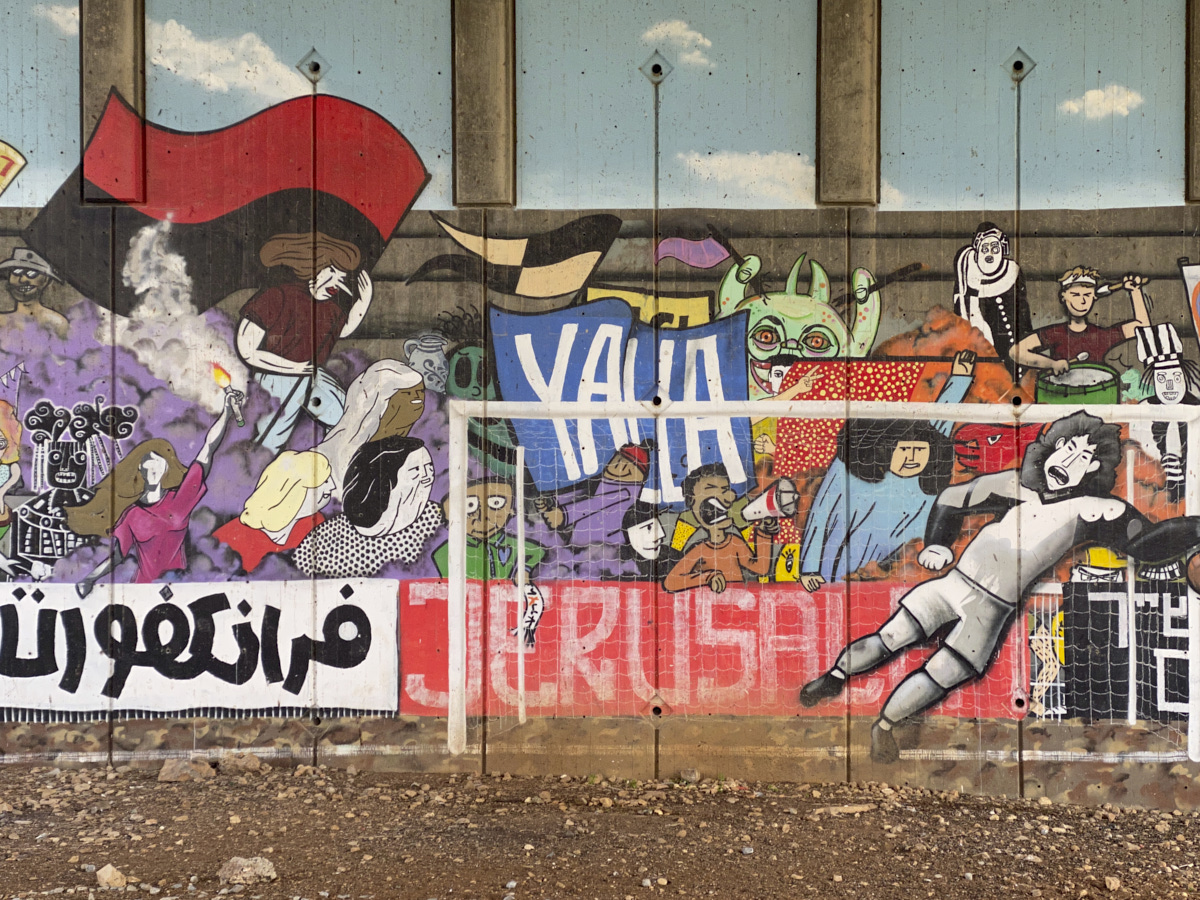
Pater Noster church
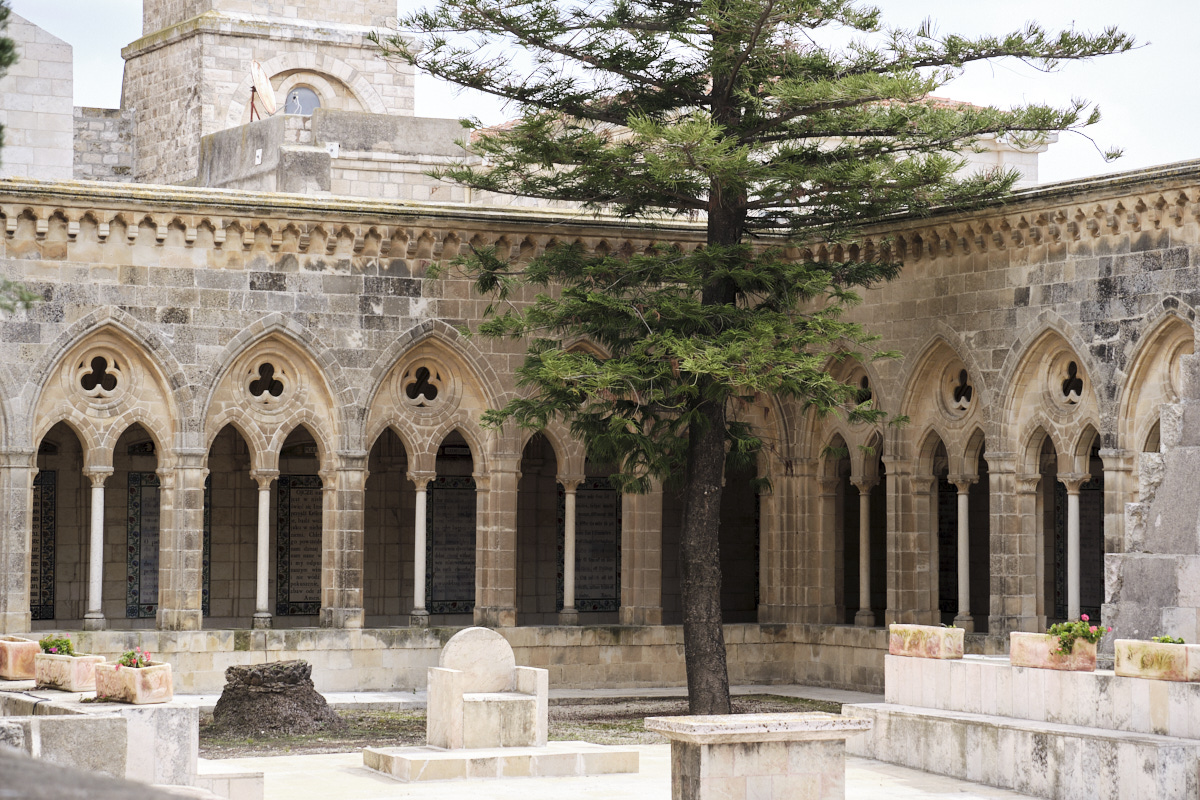
Montefiore Windmill Jerusalem
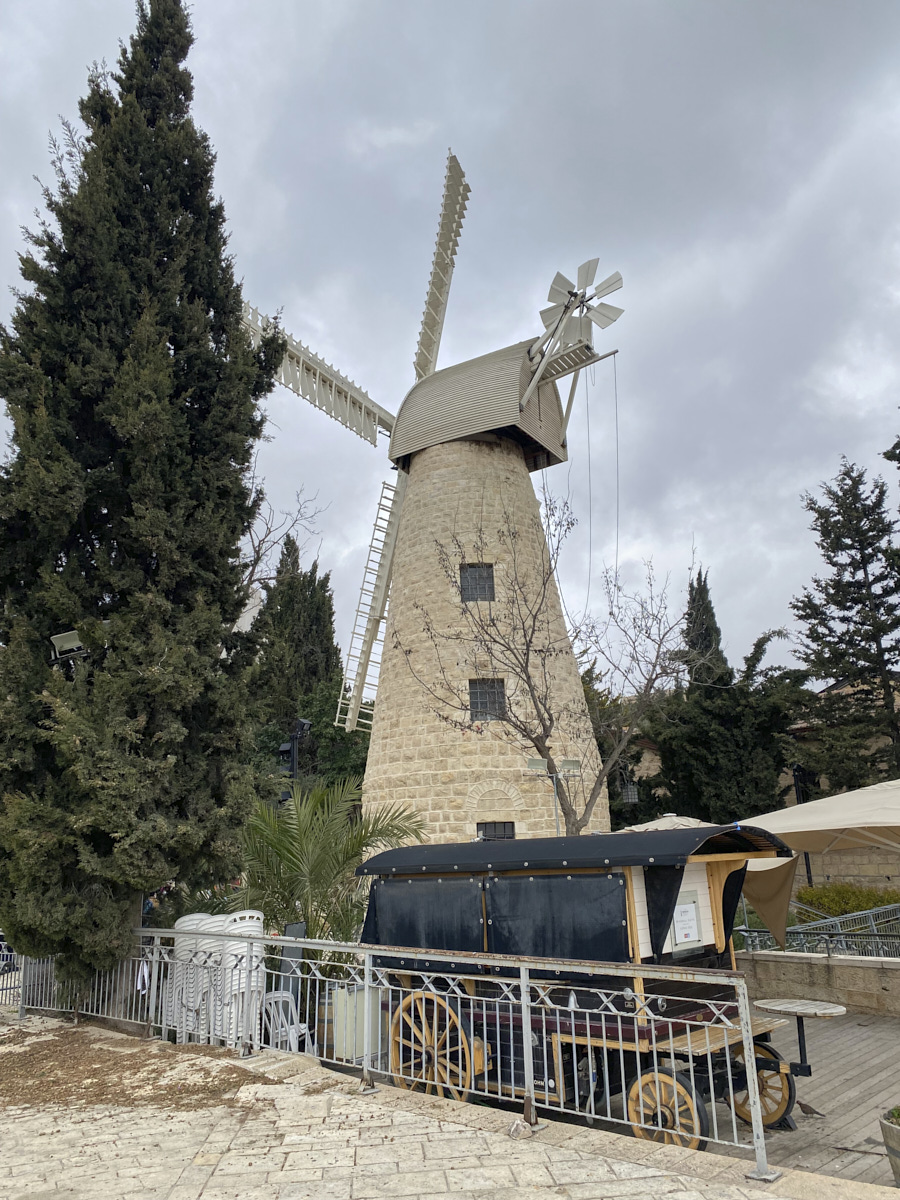
City art snake Jerusalem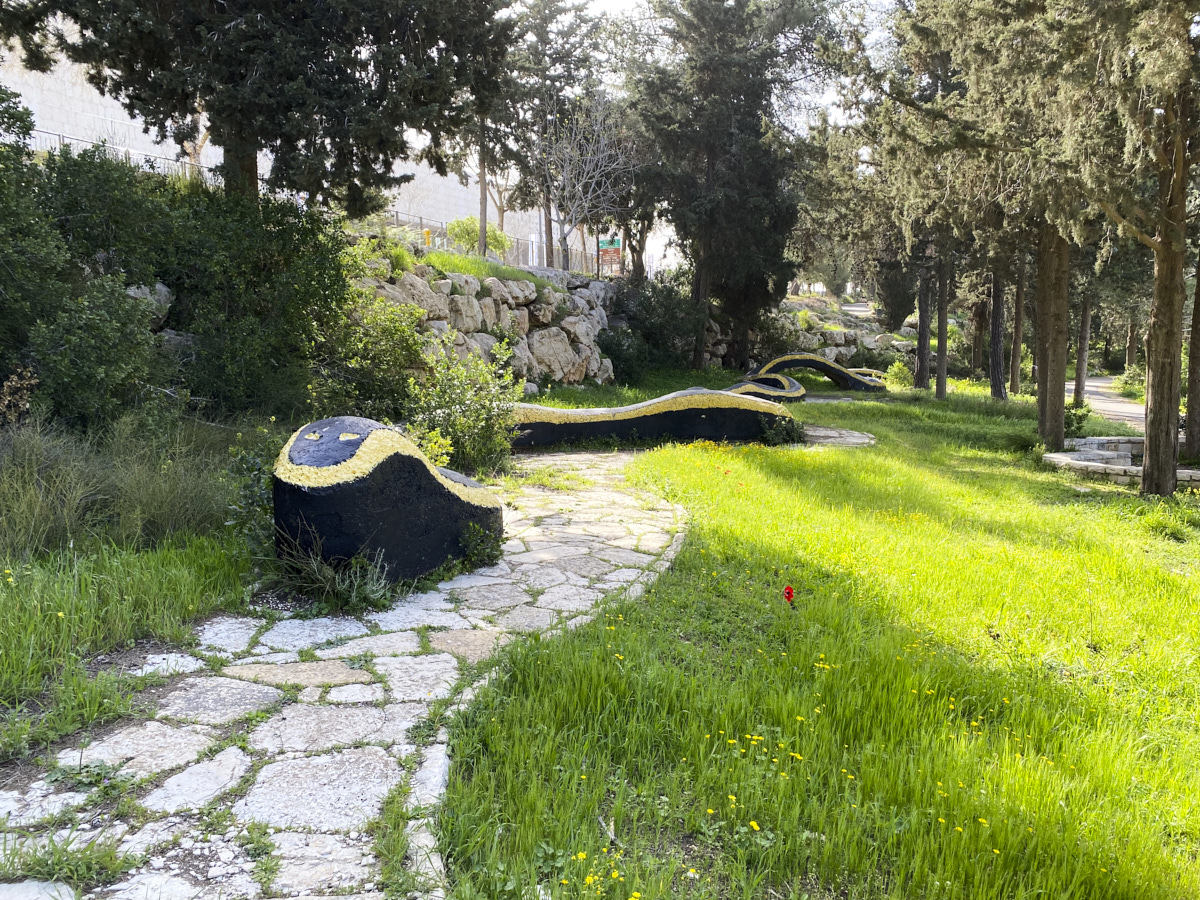
Israel Museum Model of Jerusalem in 2nd Temple Period, at the Israel Museum. The museum was amazing, it took us a couple of days to explore it. 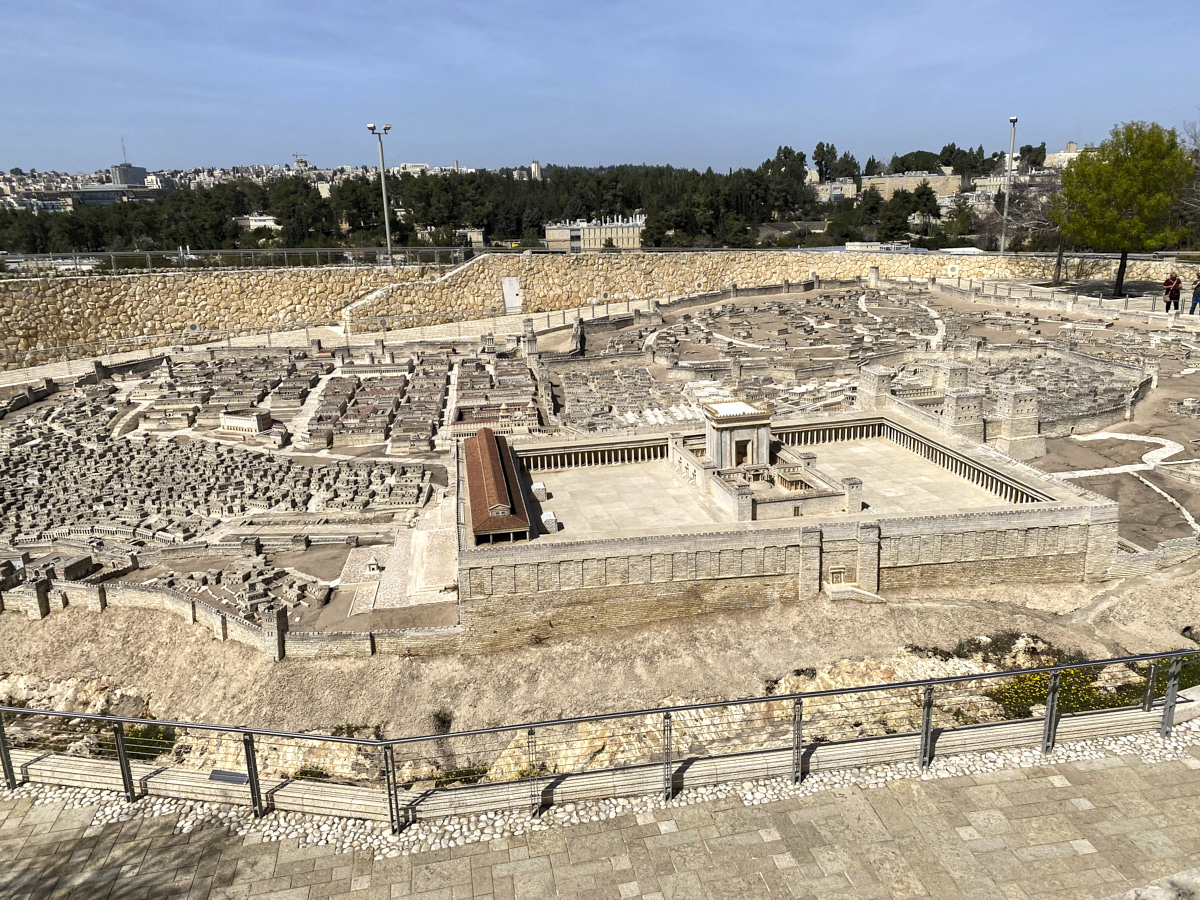
Weaving work from the museum 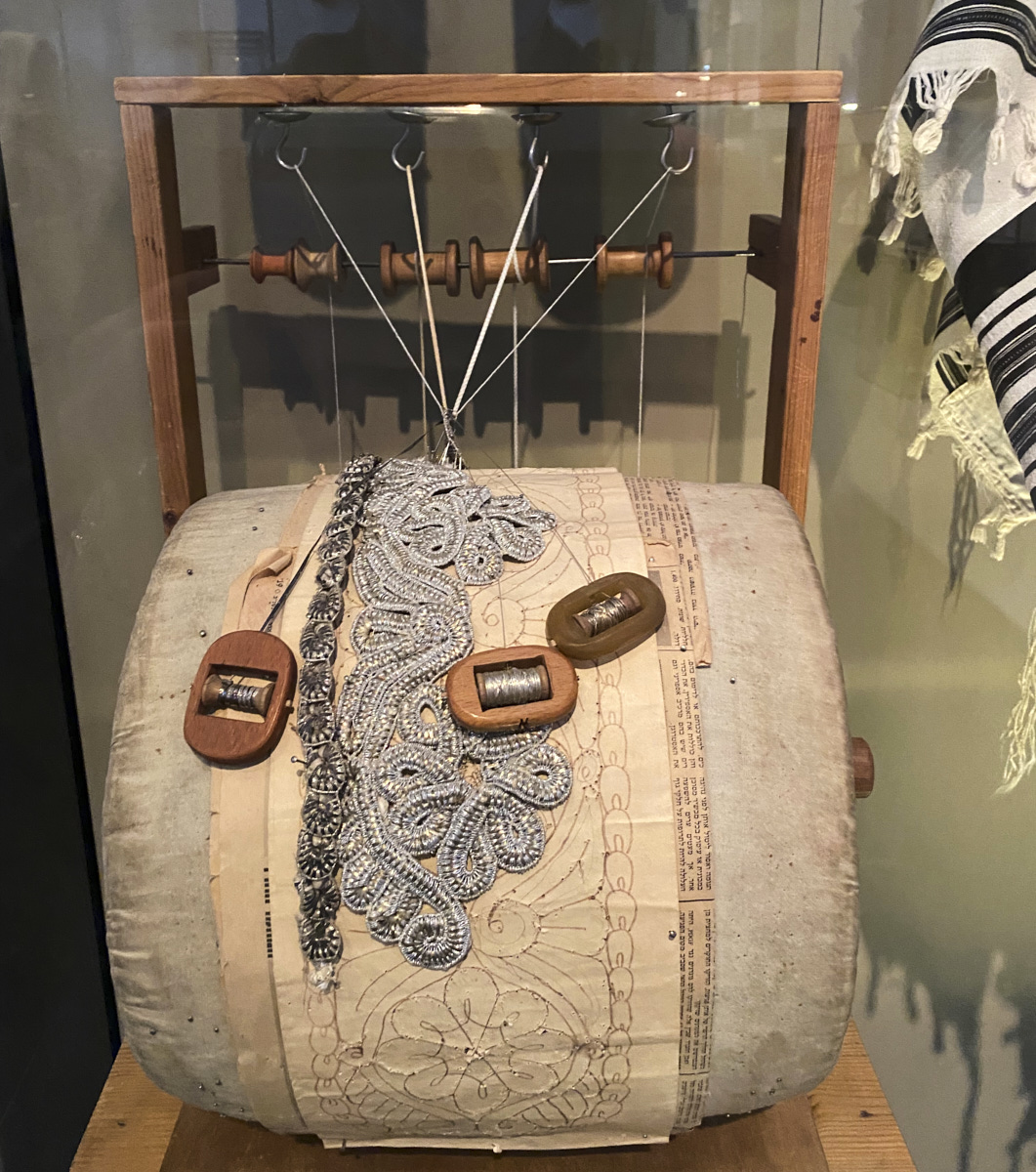
A Knitting cap from the Israel museum 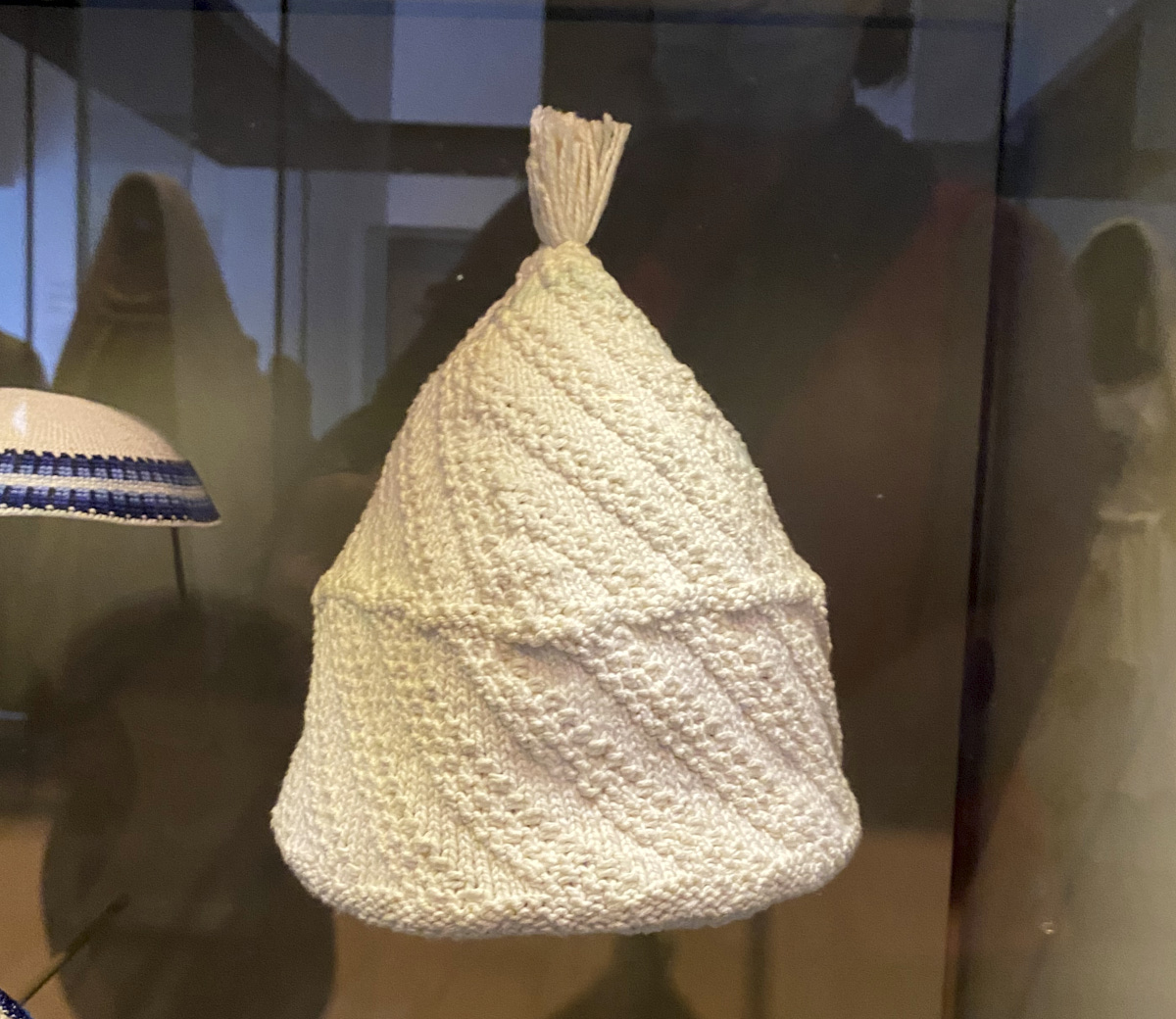
Statue by Fernando Botero outside The Israel Museum of Jerusalem
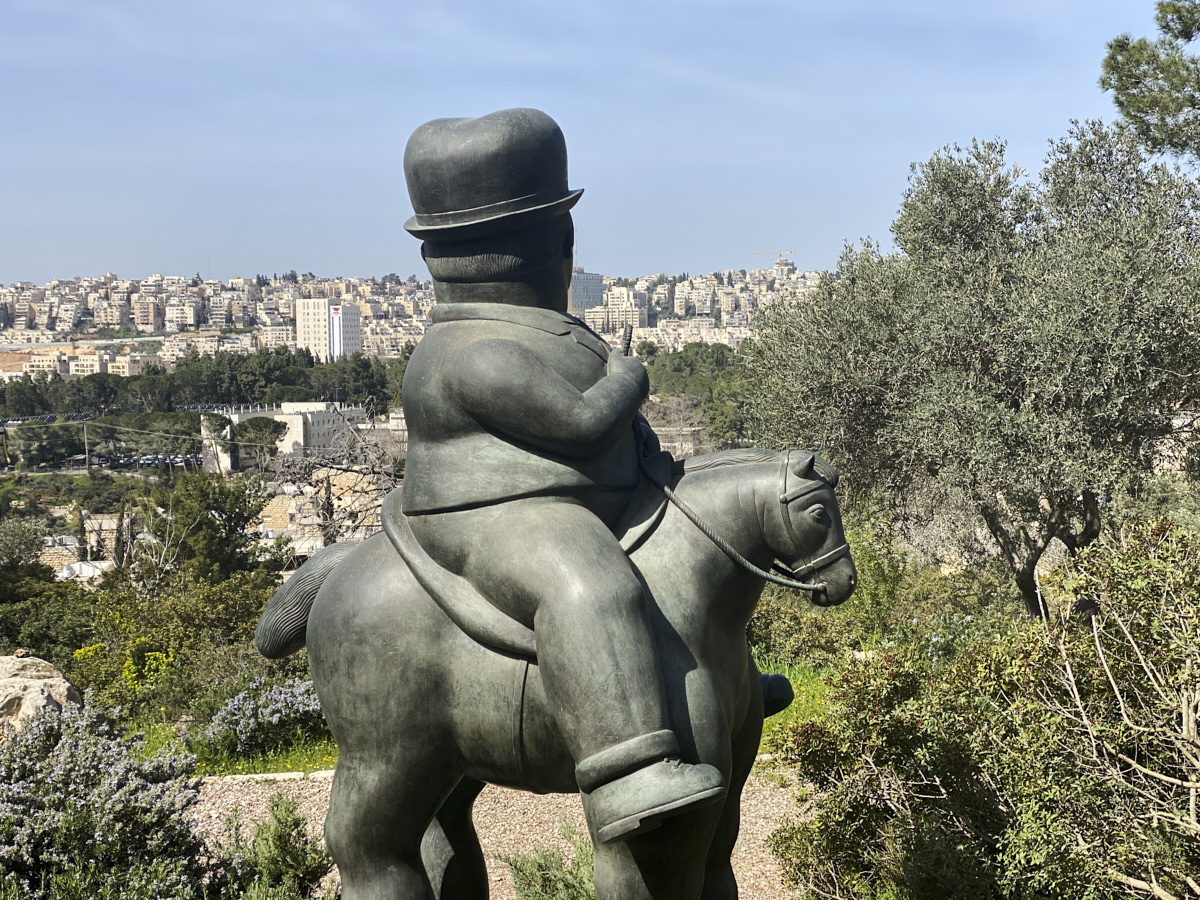
Man statue outside The Israel Museum of Jerusalem
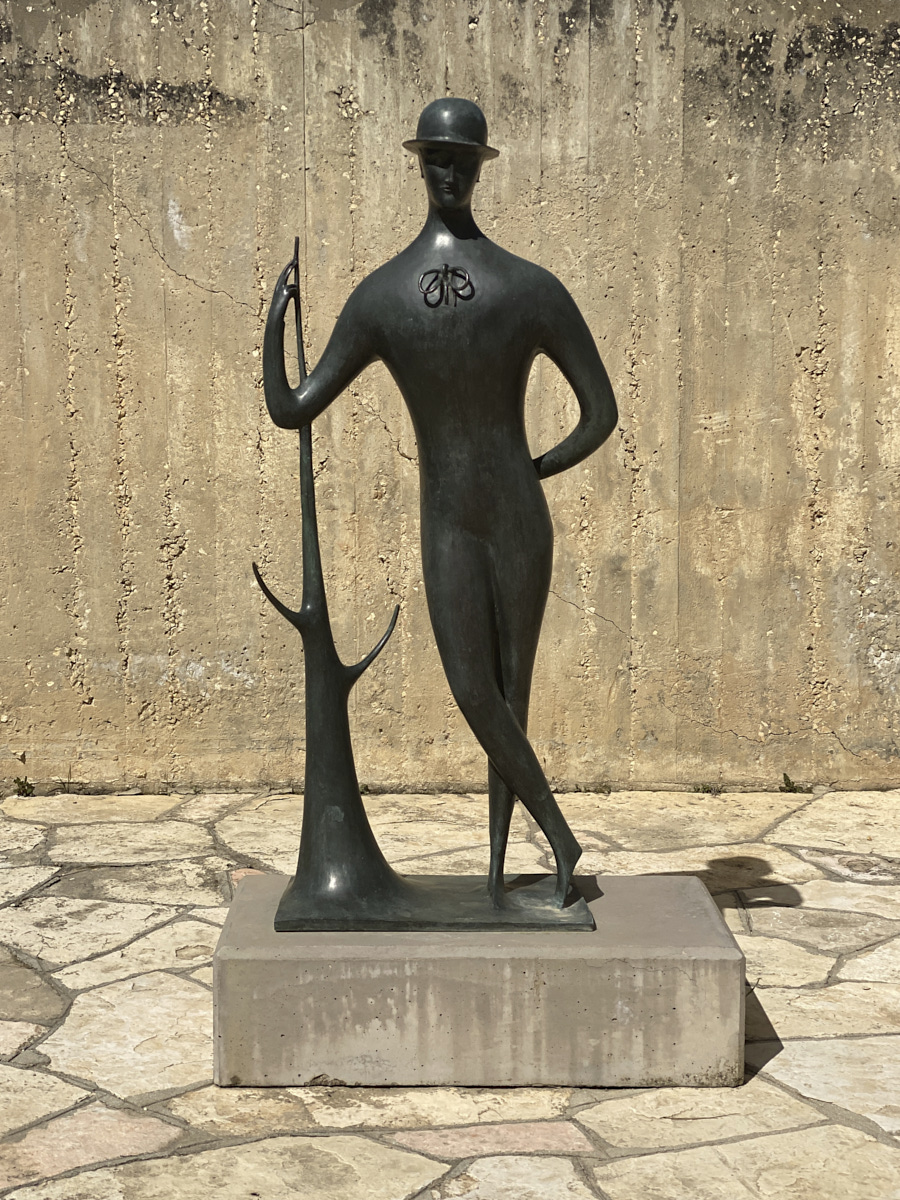
Church of All Nations, next to Gethsemane gardens
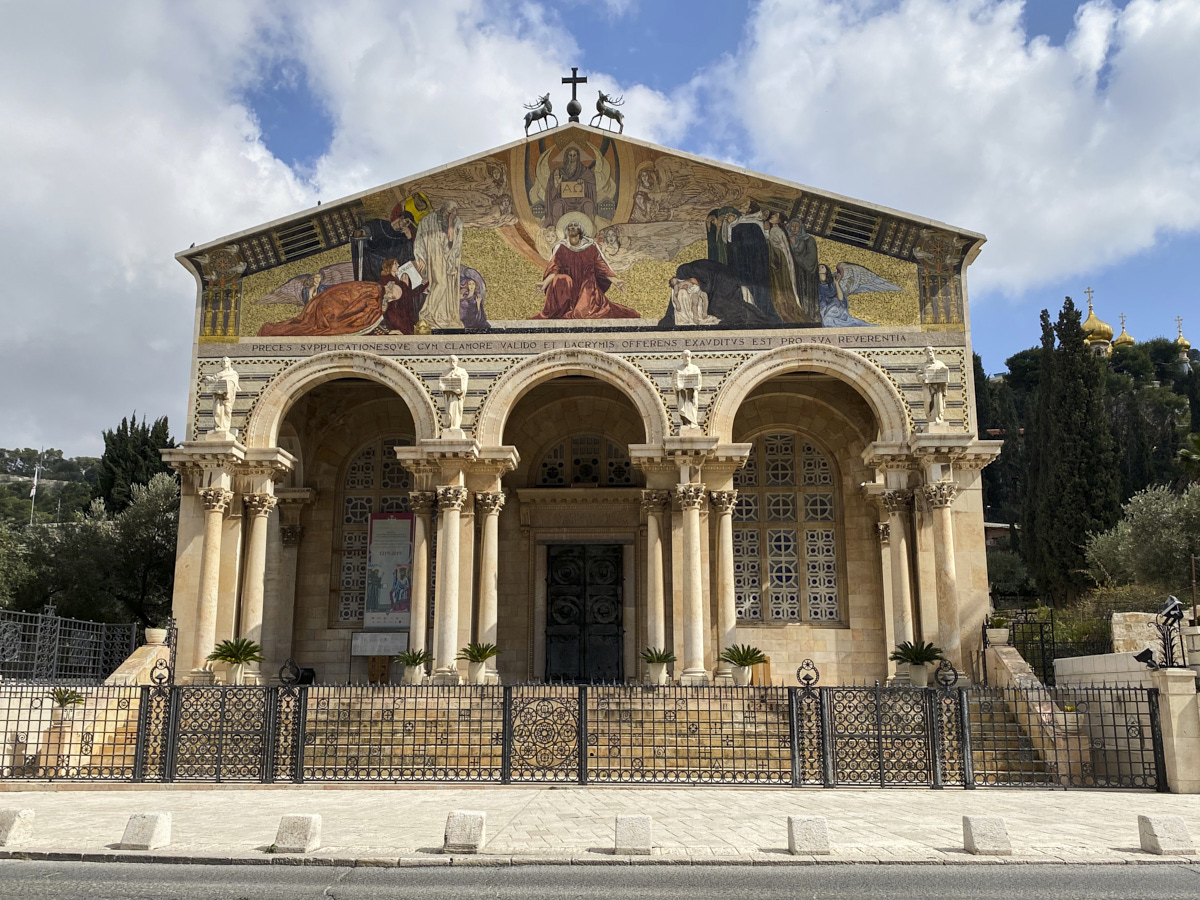
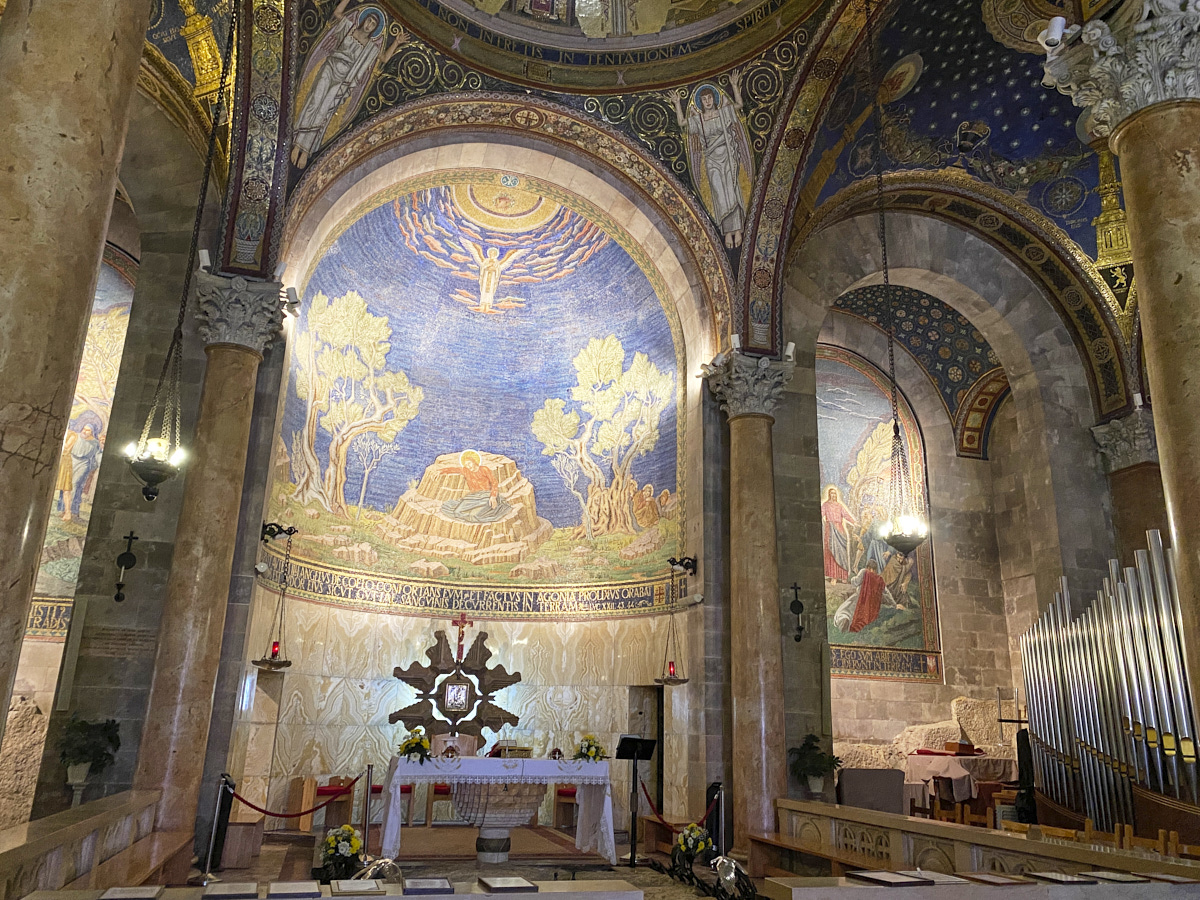
There was also a small grove of olive trees outside the church, believed to be the garden of Gethsemane.
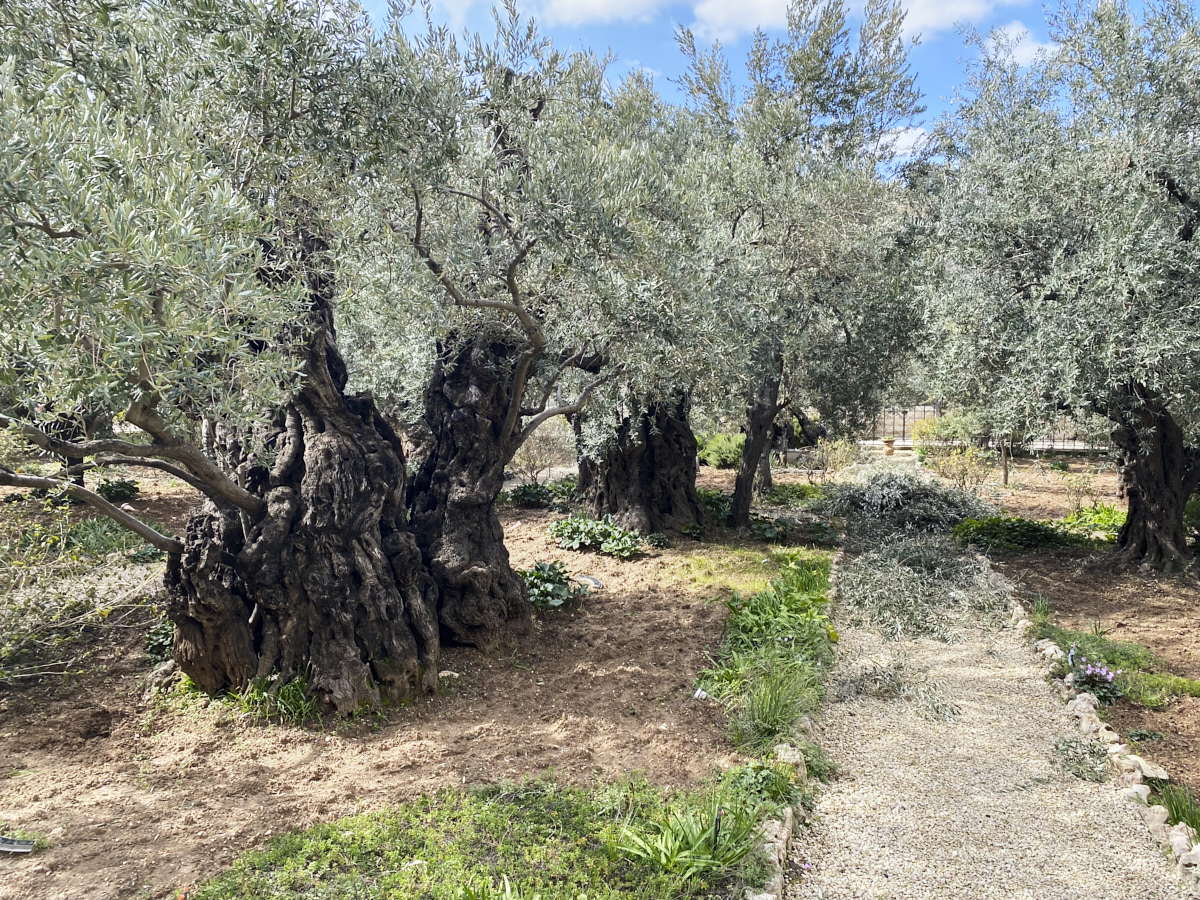
We spent a day at the Holocaust museum, but since they ask that you not take pictures, this is the only view- showing the interior architecture.
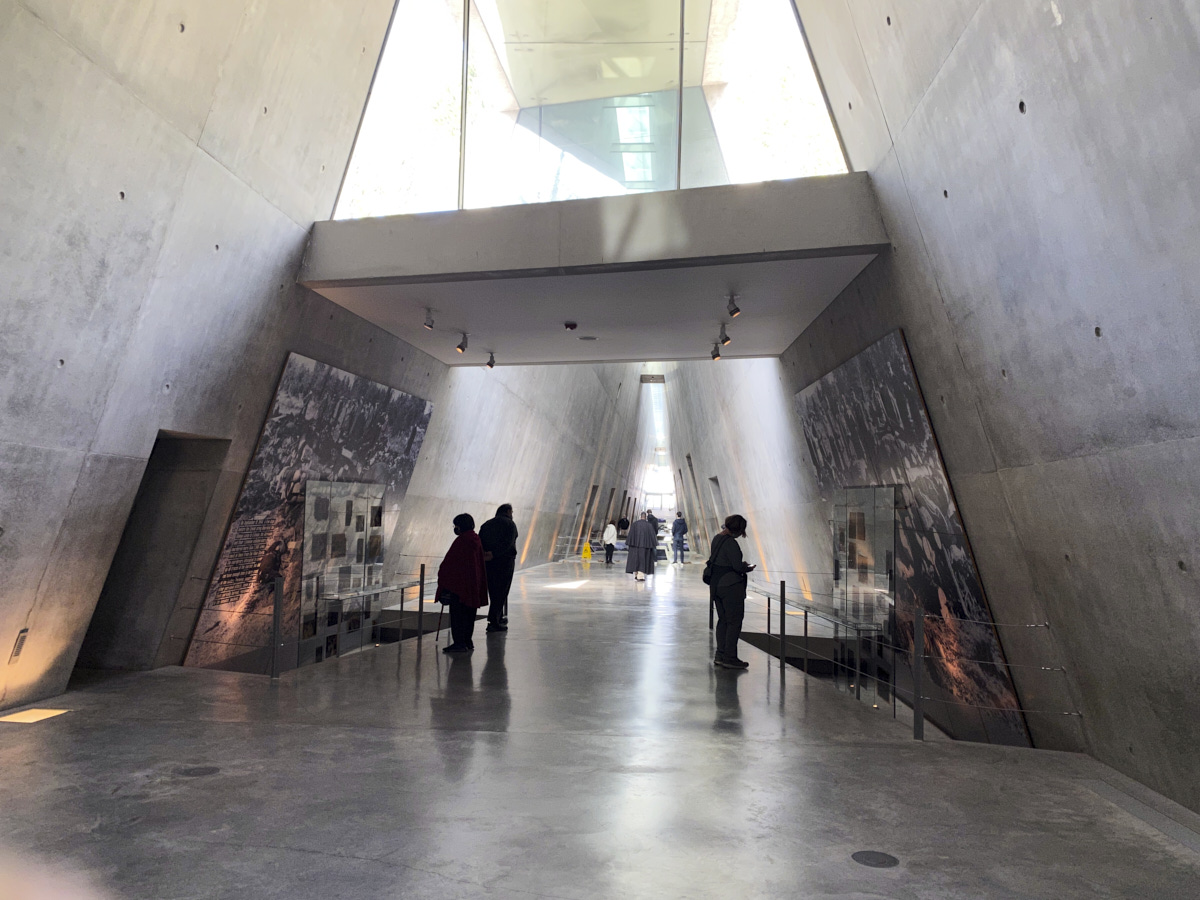 Church of Alexander Nevesky, Russian Orthodox church. Located in the old city.
Church of Alexander Nevesky, Russian Orthodox church. Located in the old city.
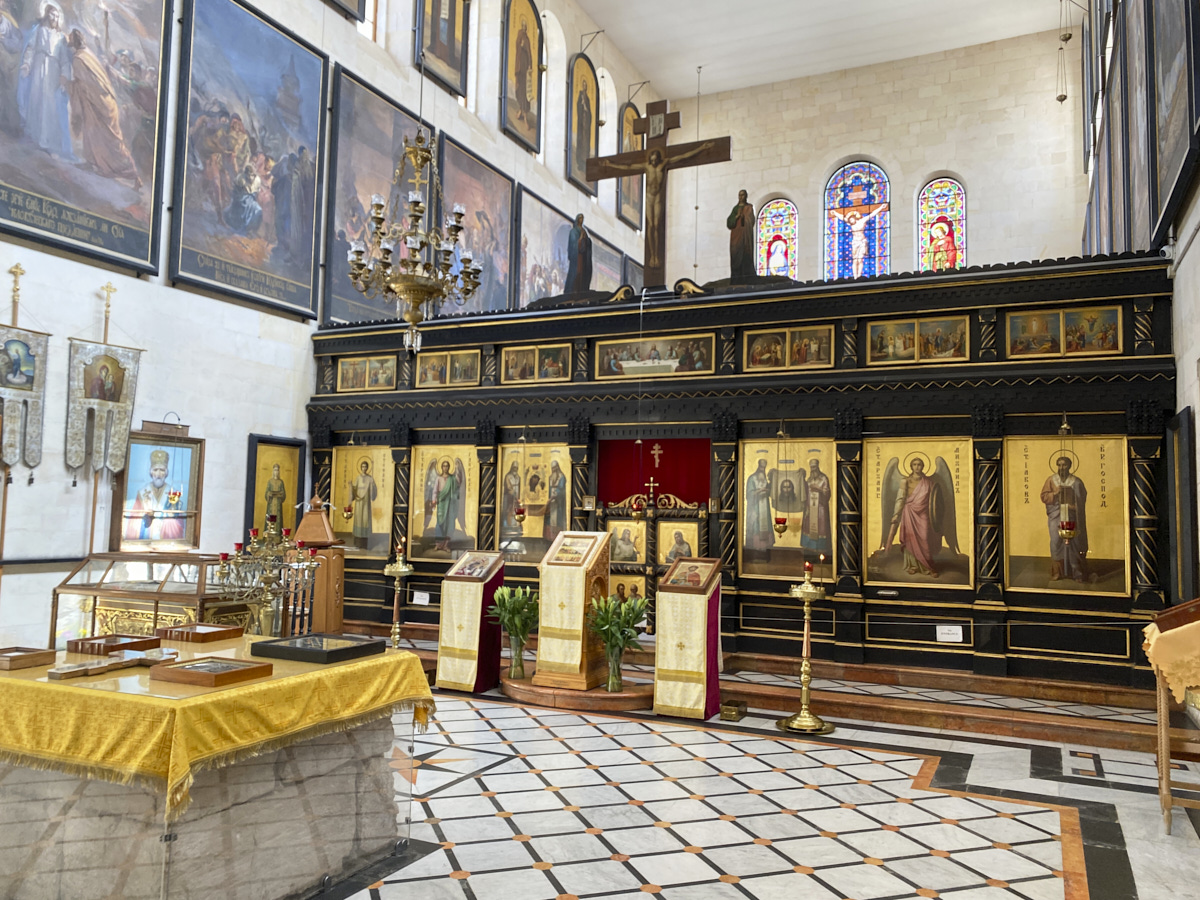
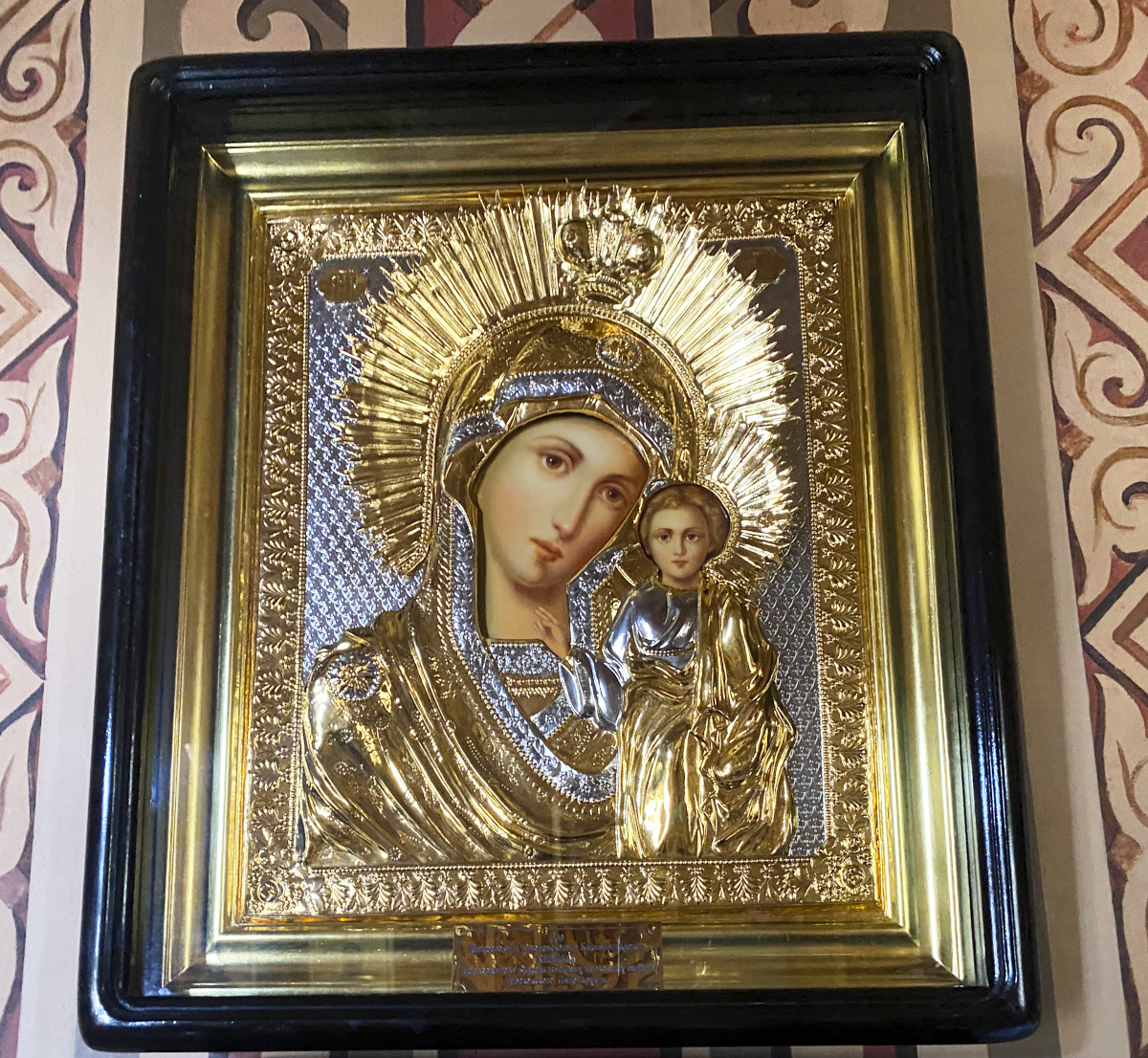
A quick lunch in the old city.
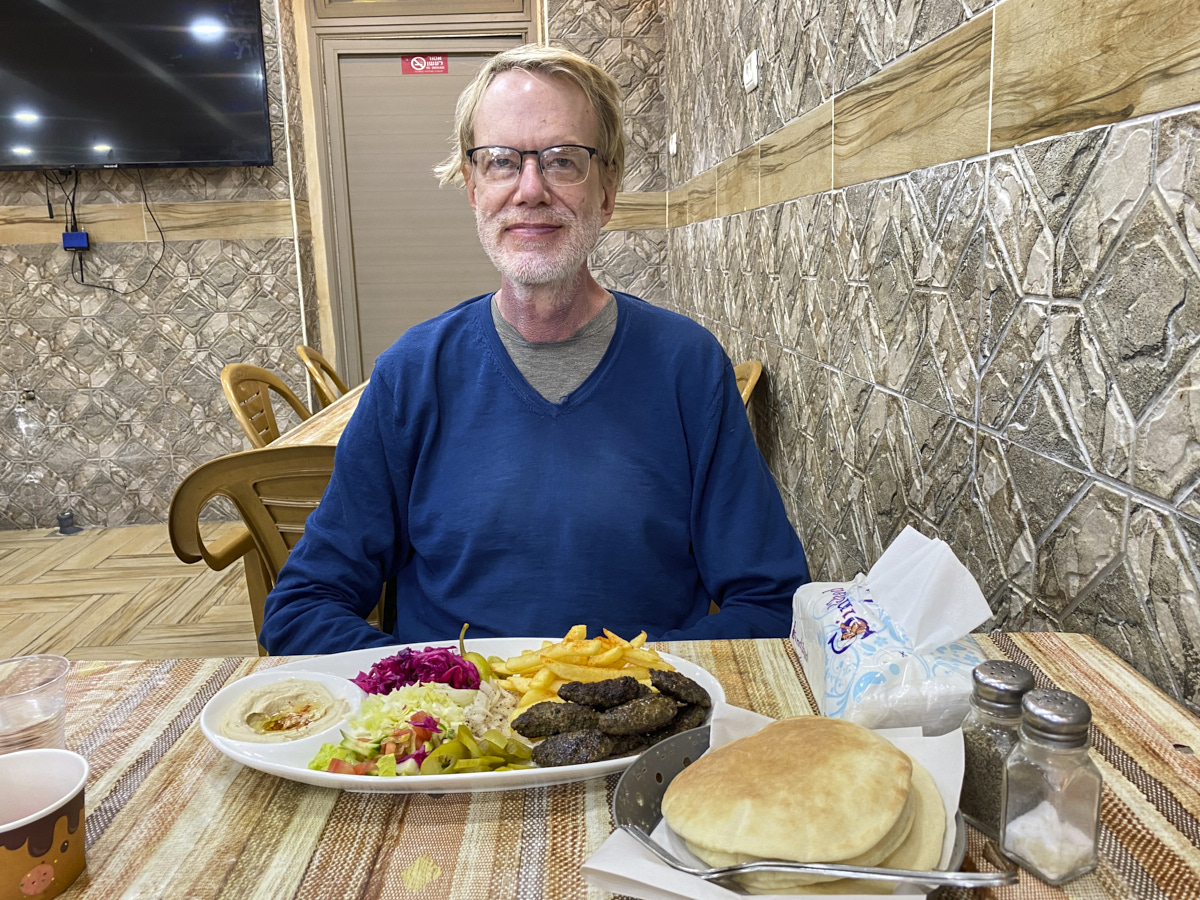
In the old city, we took a tour through the underground portion of the city. The Western wall (wailing wall) that is visible above ground is only a tiny portion of the wall. Portions of the wall have been destroyed and rebuilt during various conquests, and the wall has been modified as well. The image below looks like there is a section made from concrete, but it is actually finely dressed stone. The middle stone is about 30 feet long (10m) if I remember correctly. Later, this area was used as a cistern to hold water, so they needed to attach a waterproof layer to the wall. To do this, they carved the pockets that you see into the stone to allow the facing wall to be anchored. For later sections of the wall, they realized that they just needed to roughen the surface of the wall to allow the facing wall to attach. 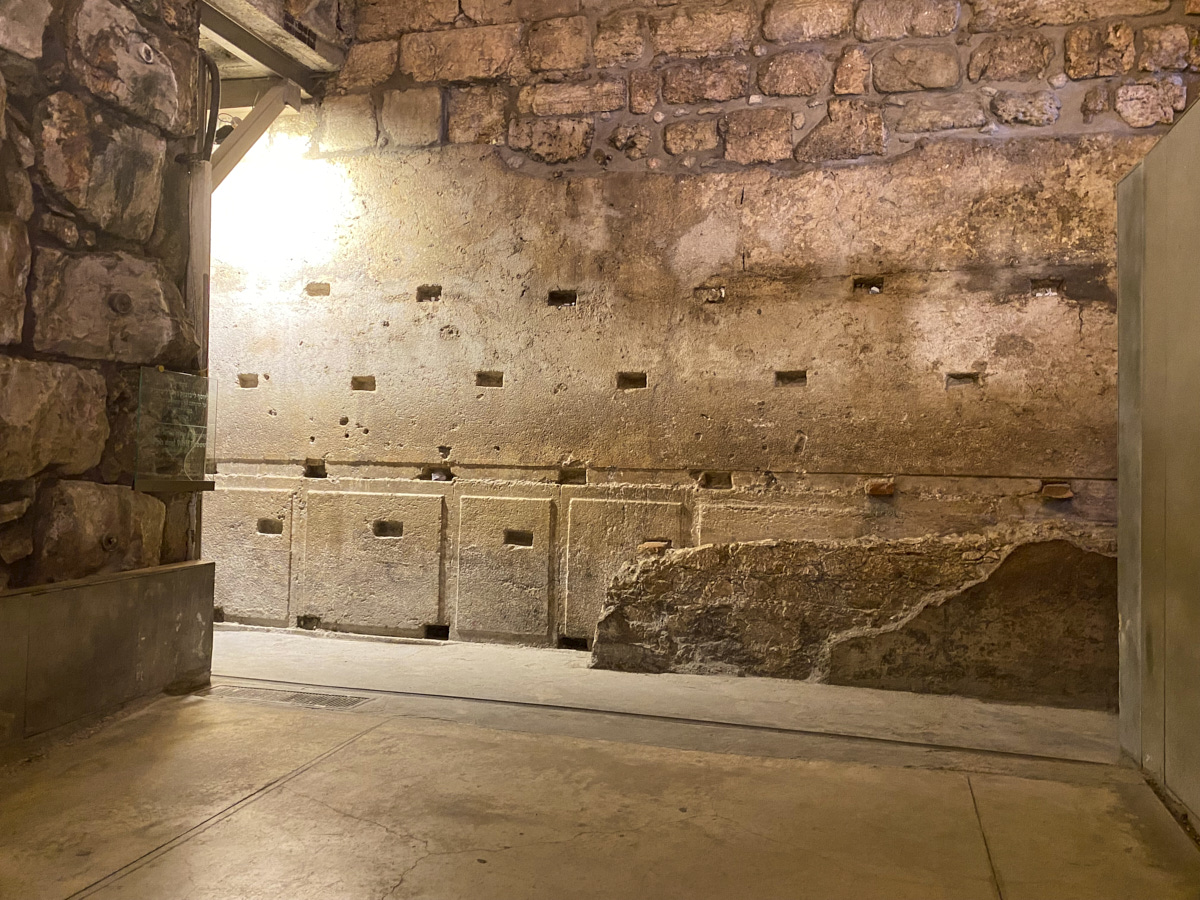
Roman era road under the old city, near the wall.
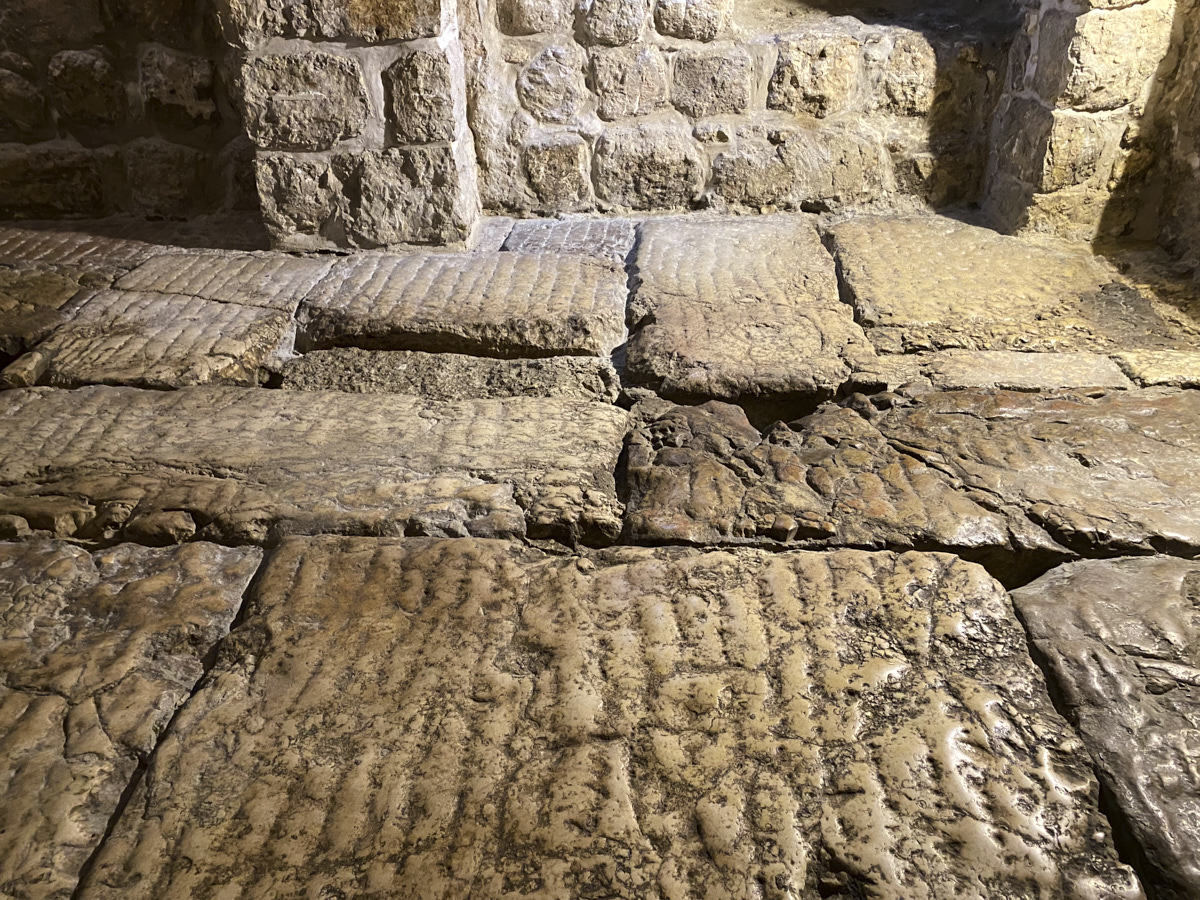
Part of our underground tour, walking between stone channels that were used to funnel water to the cisterns. The Western wall runs almost the entire length of the old city, roughly 1600 feet. (490m)
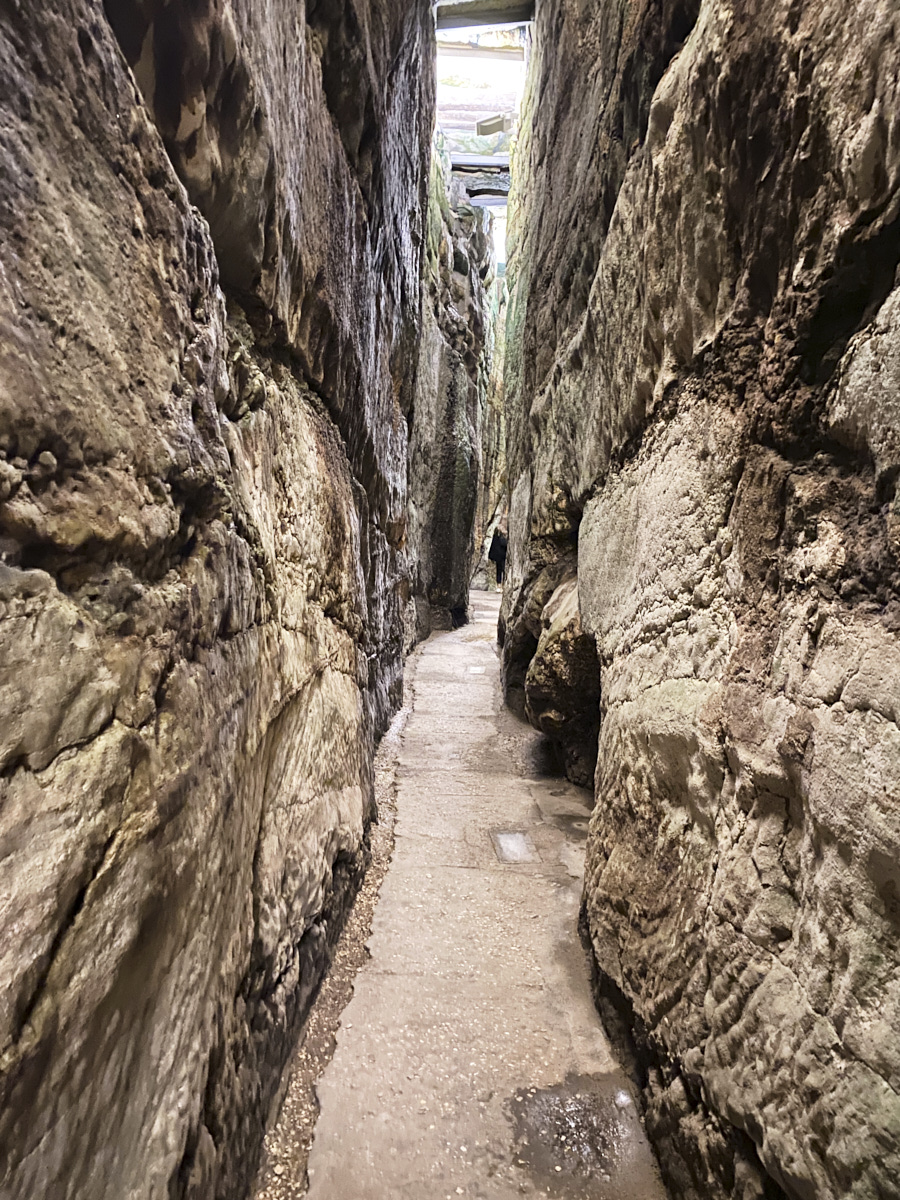
Entrance to the Tomb of the Virgin Mary, located outside the old city on the East side.
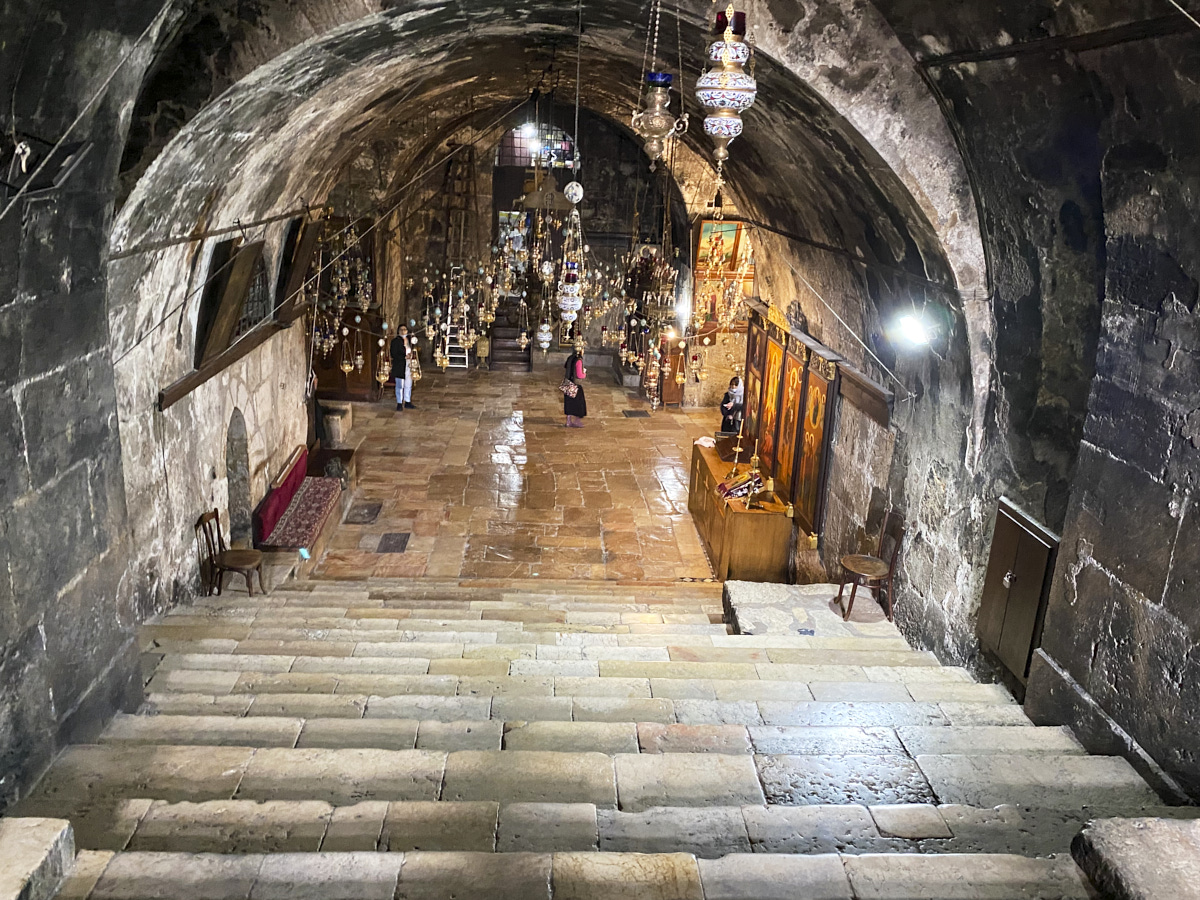
A sarcophagus, from , I believe, the Rockefeller Archeological museum. An interesting fact- people were not placed in these permanently. Instead, they stayed a year or so until only the bones were left, then the bones were removed and moved to a final burial location, freeing up the sarcophagus for the next person.
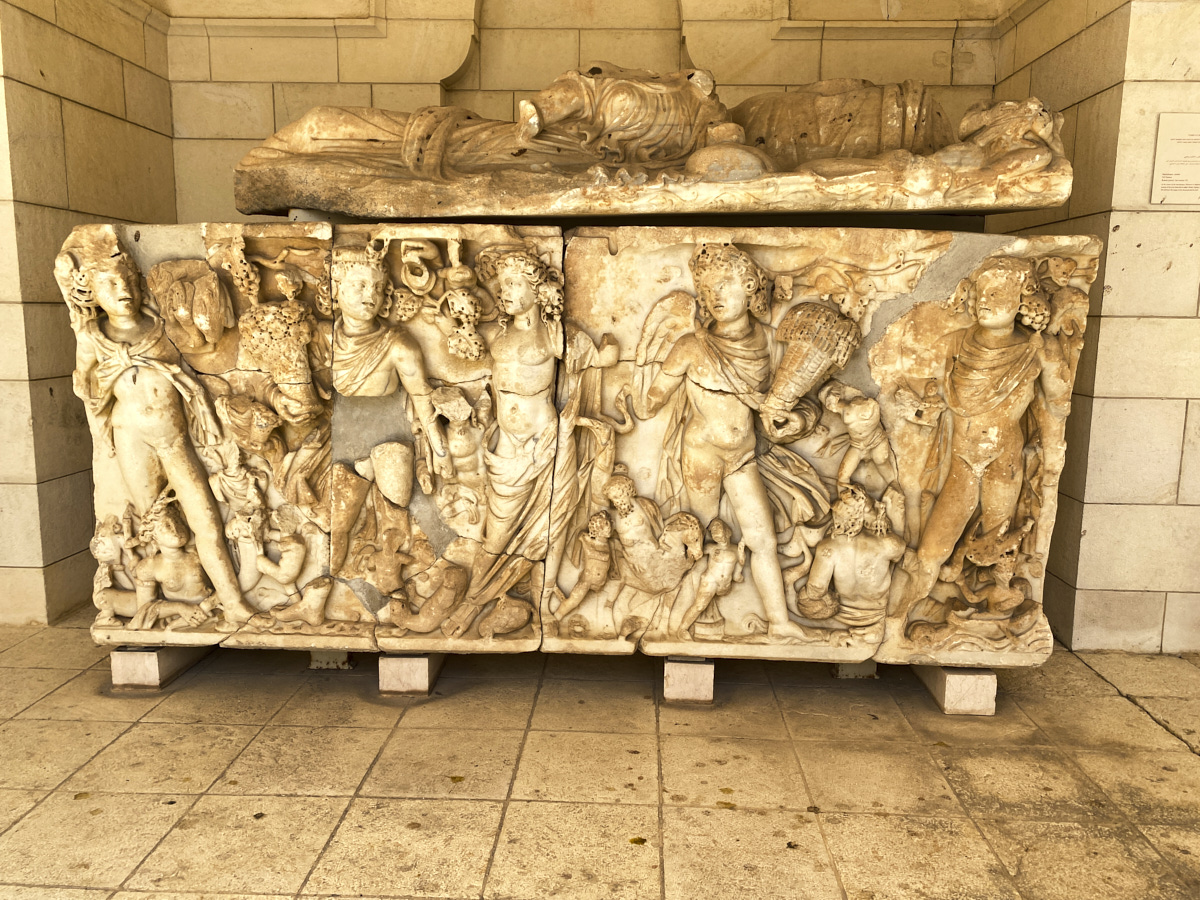
And with one last picture of the Sea of Galilee, we are ready to leave Israel. We hope you enjoyed it as much as we did.
